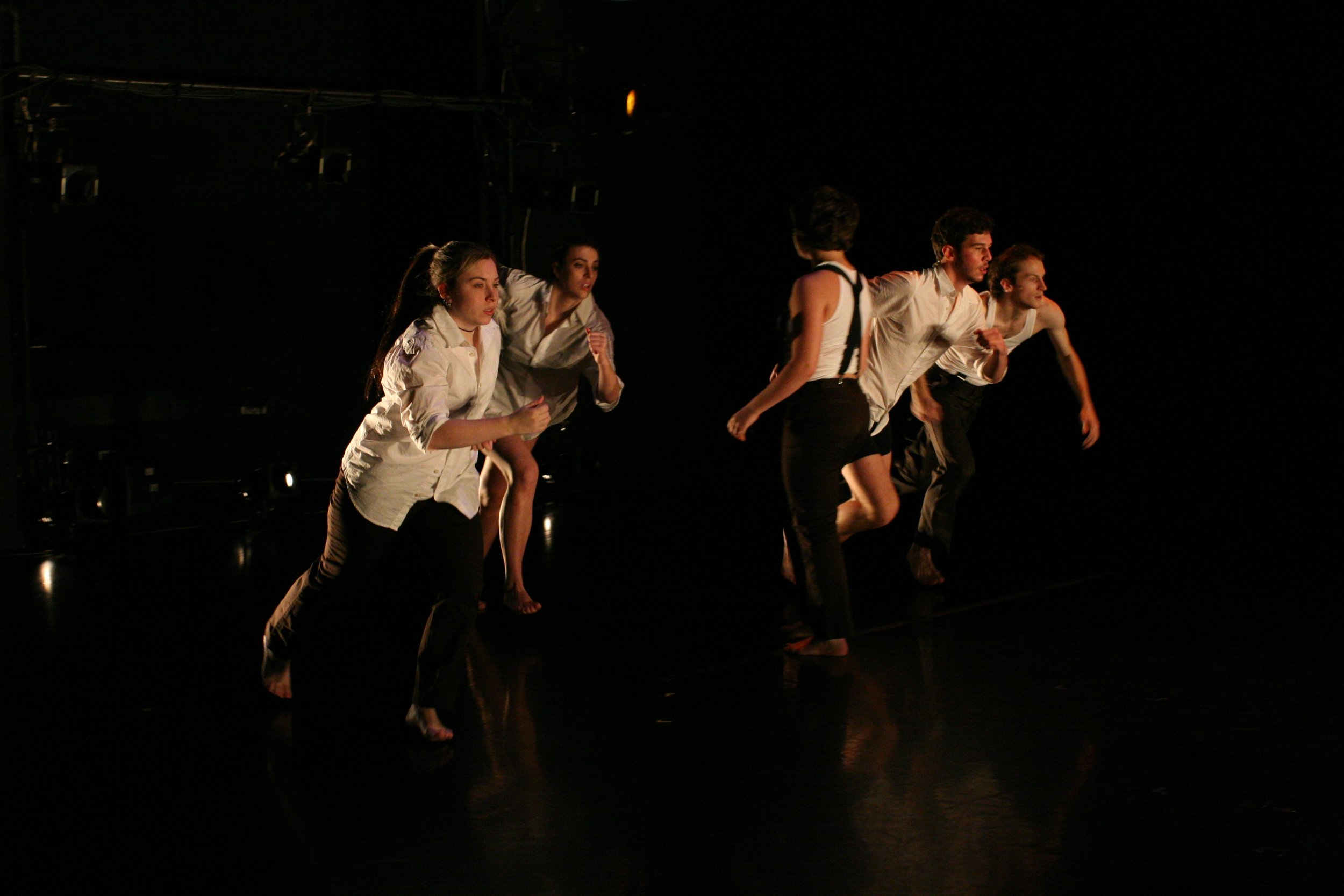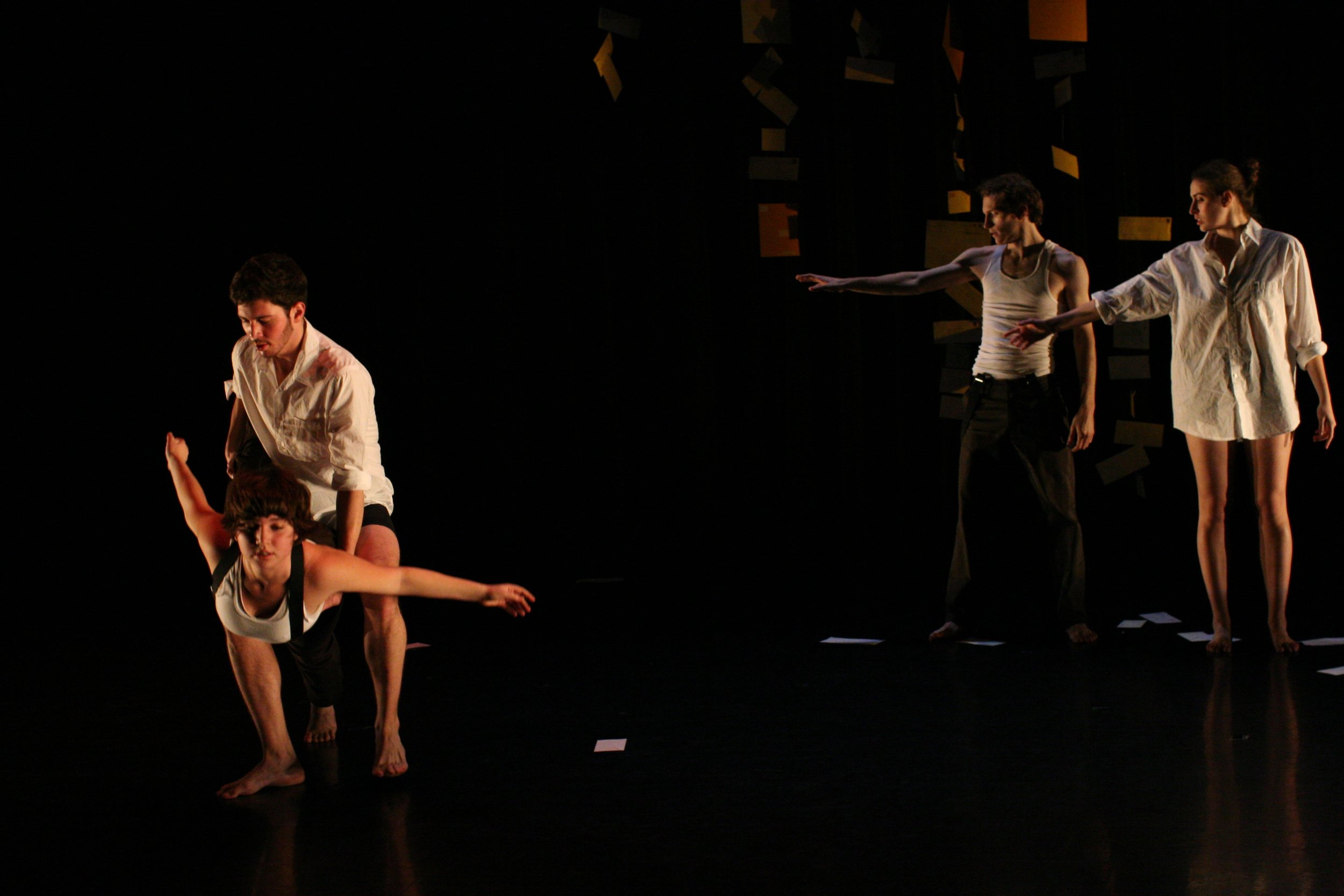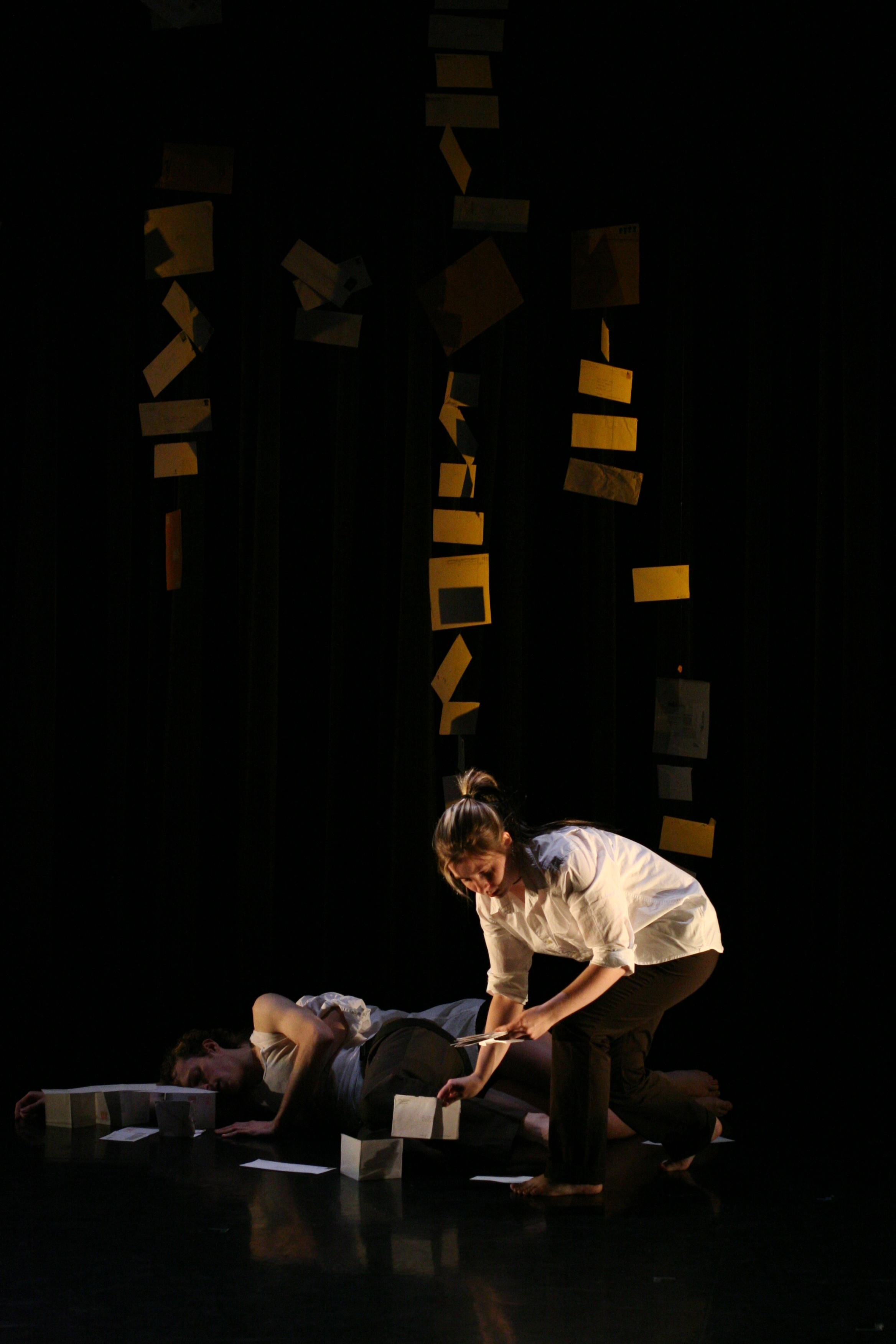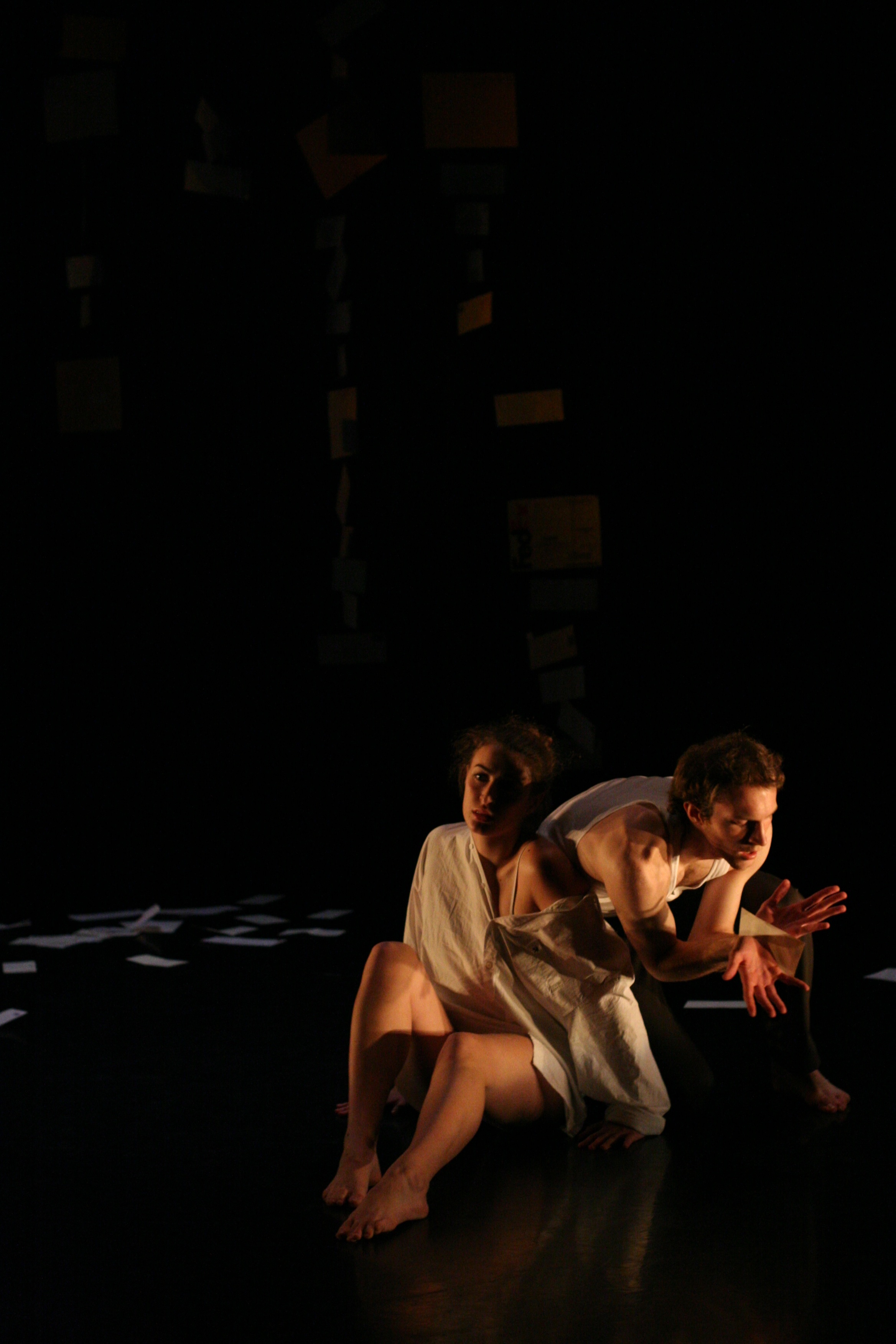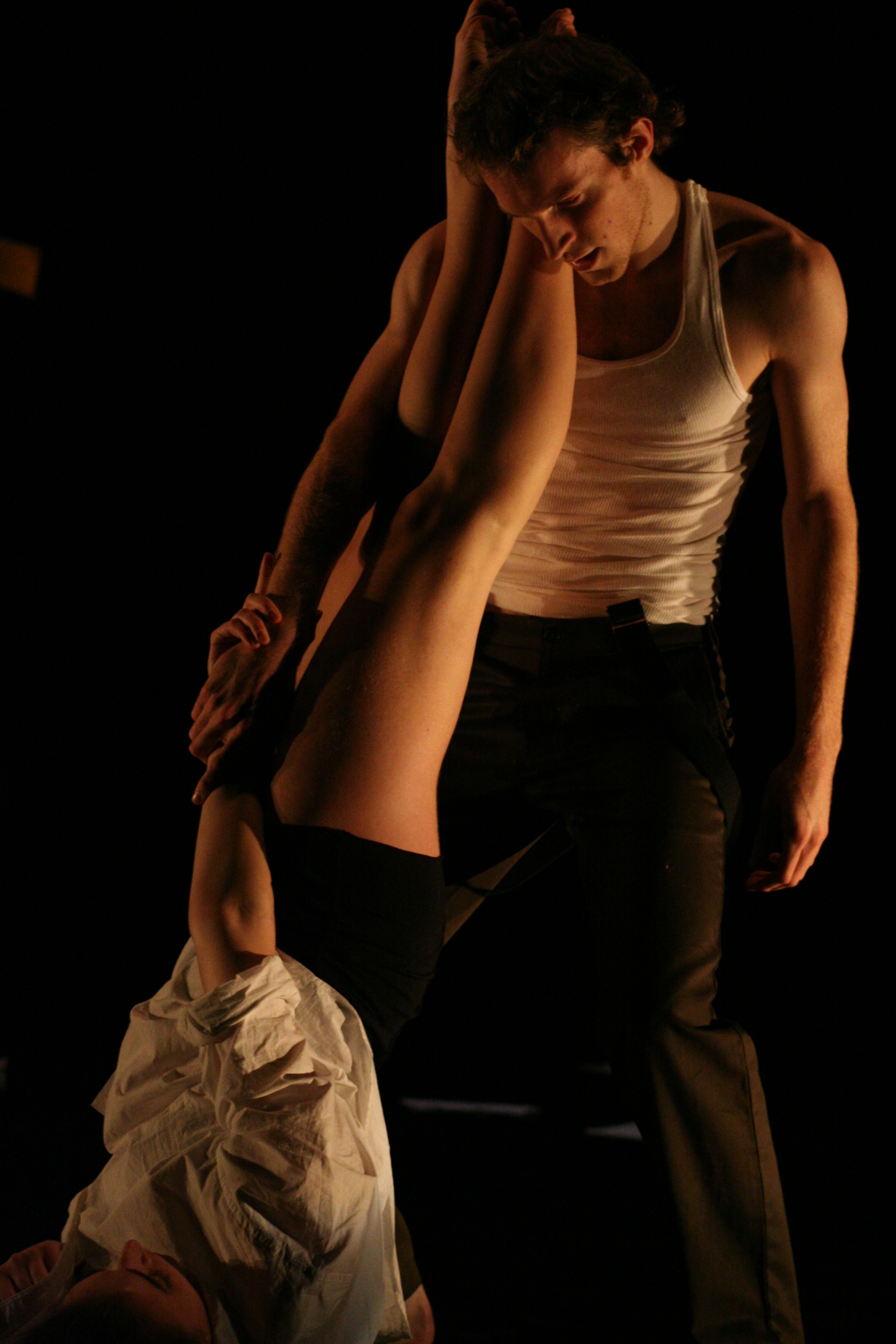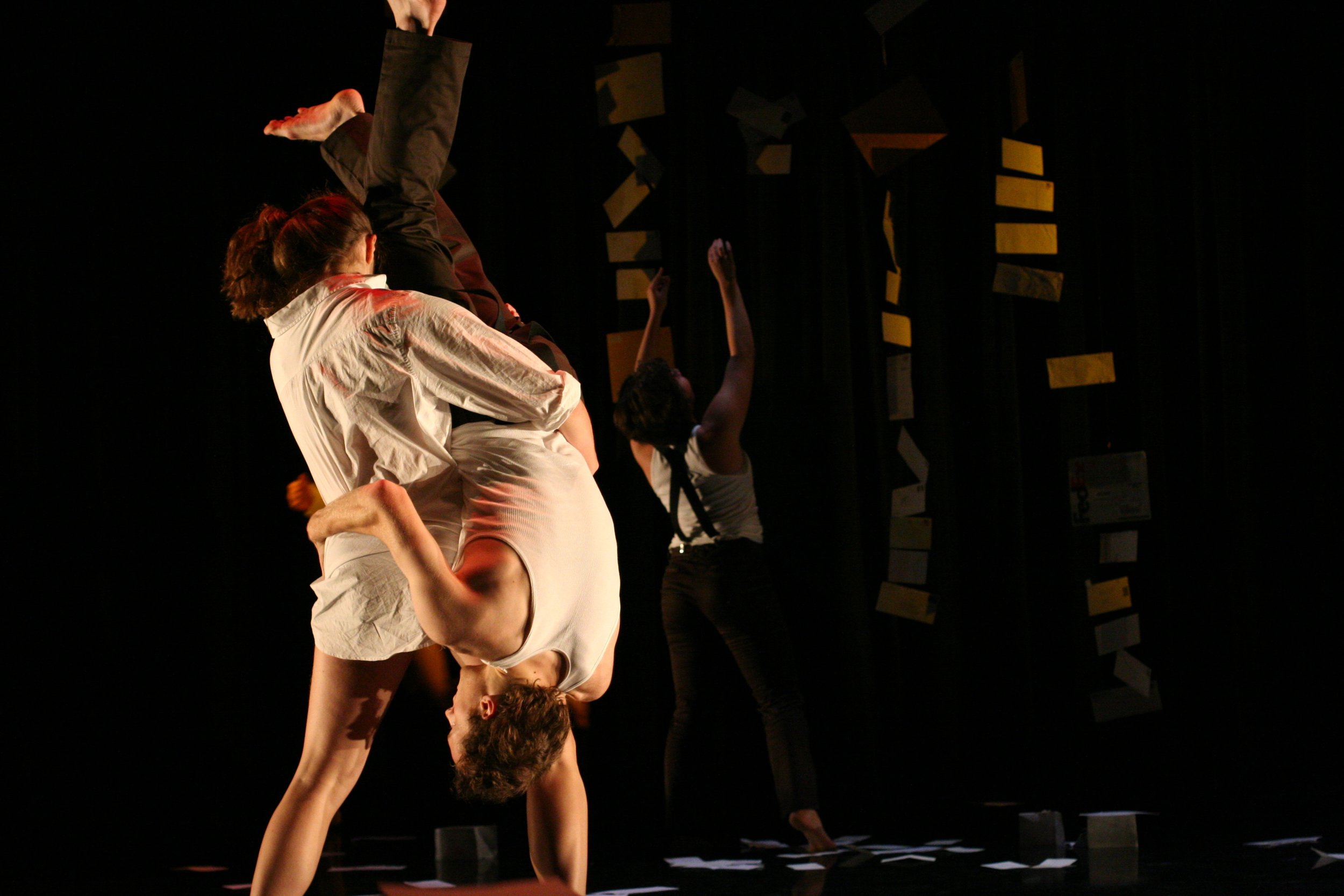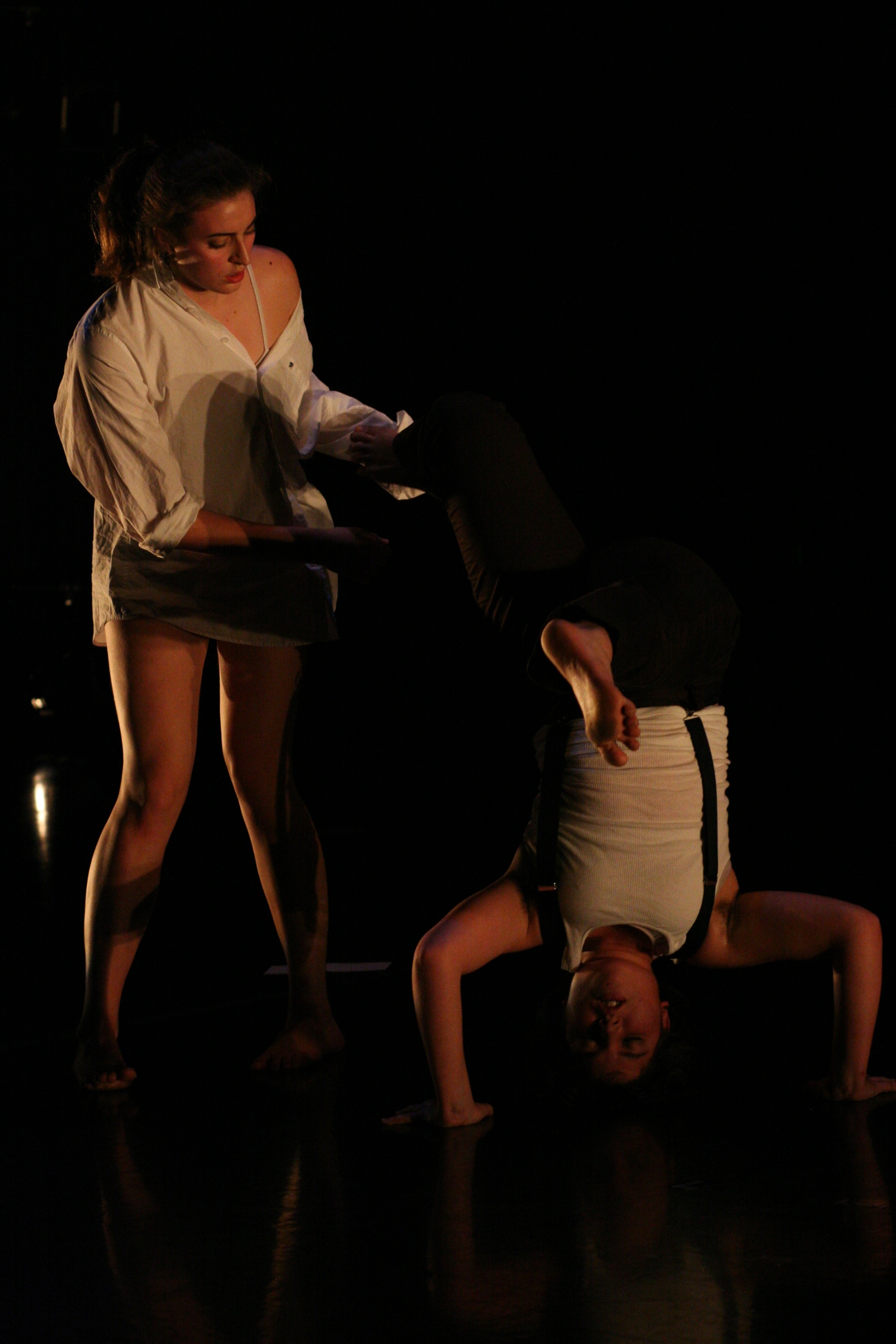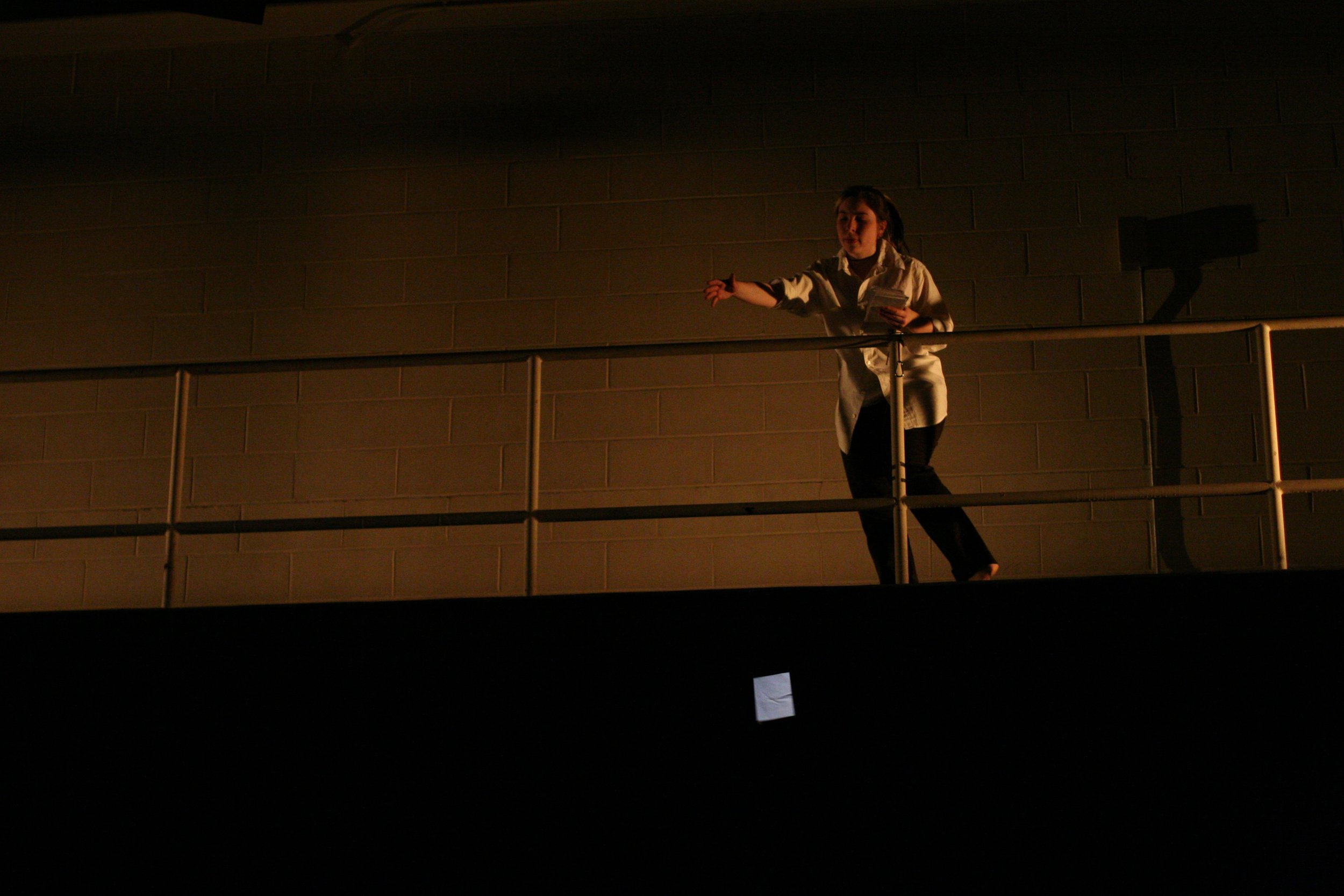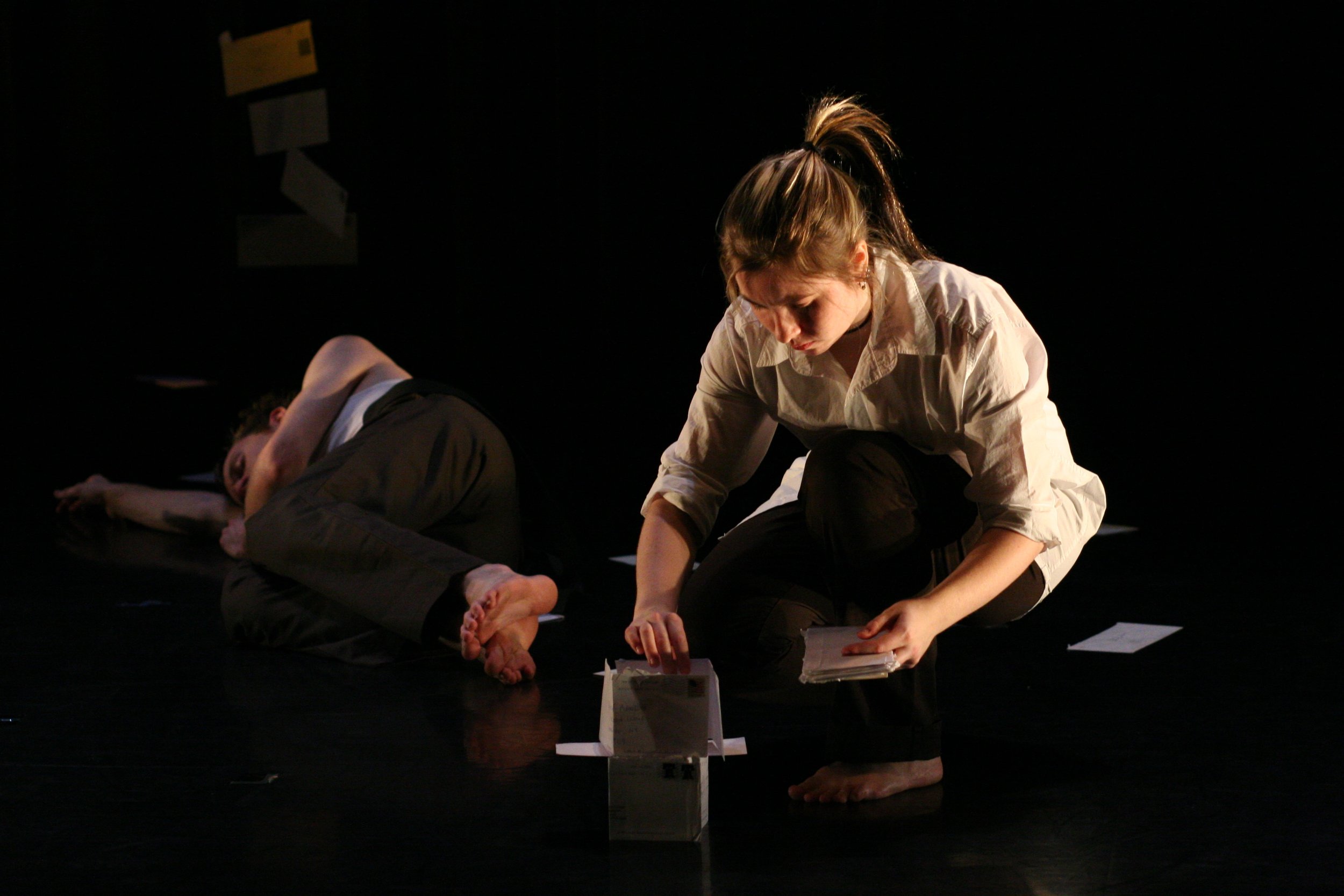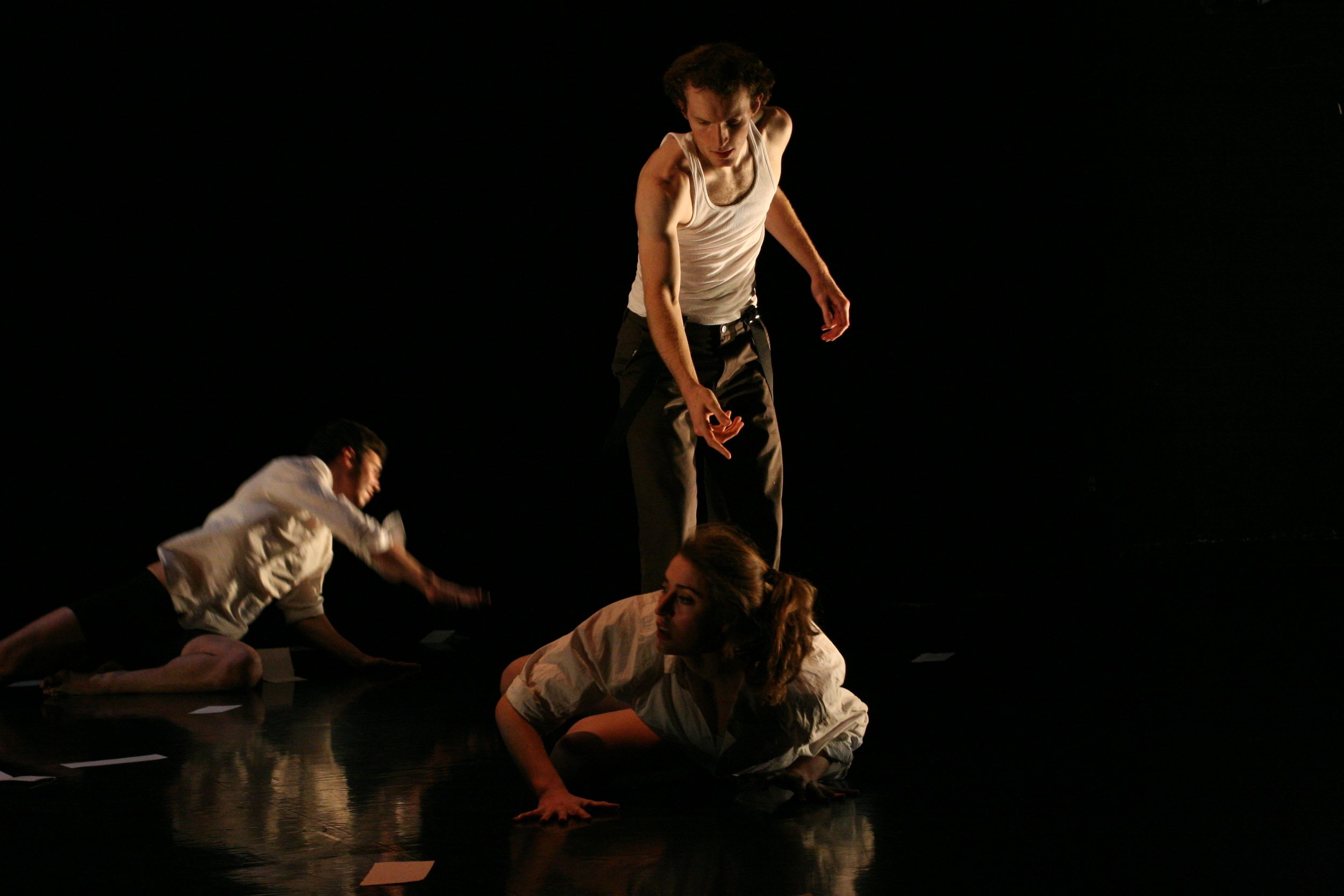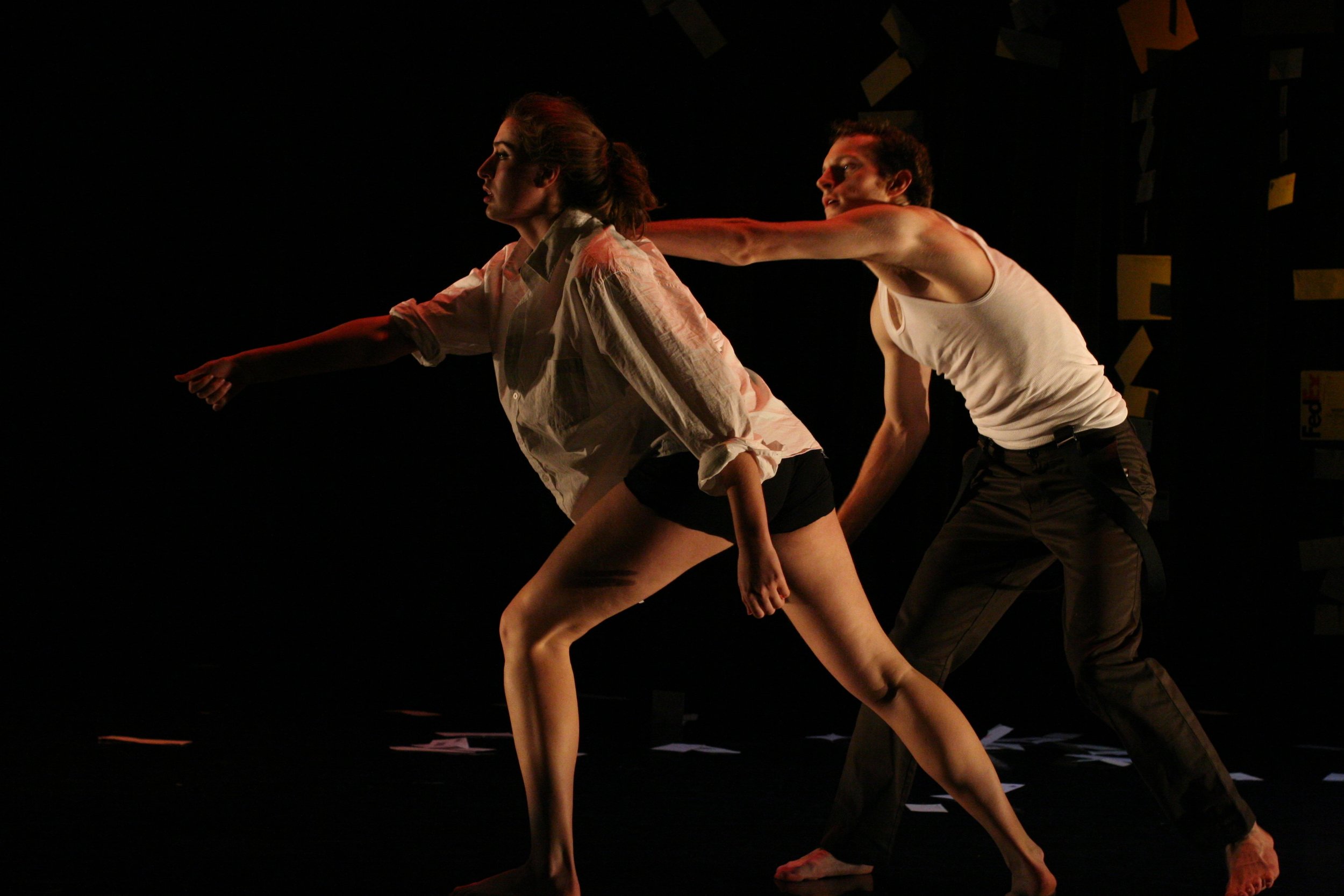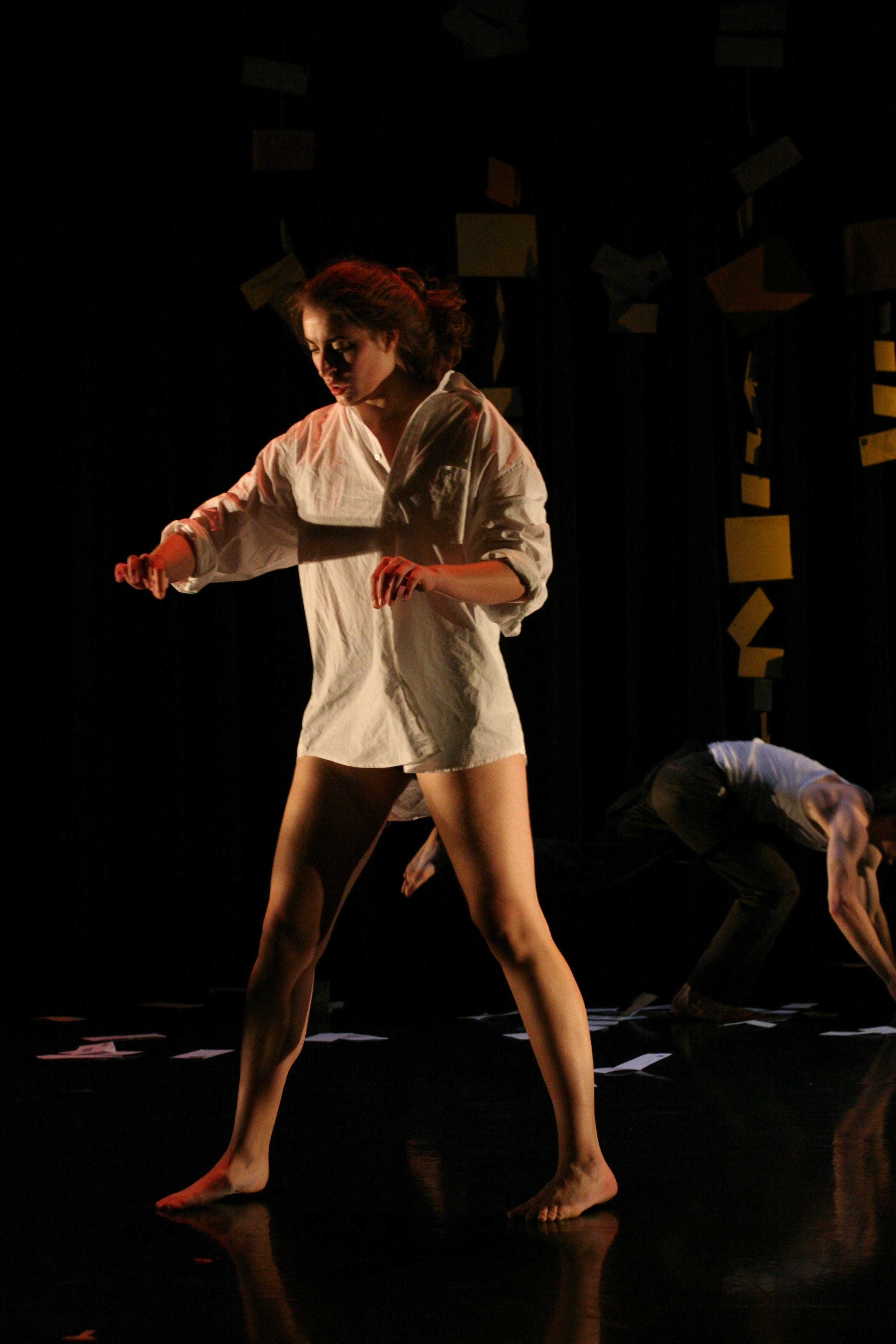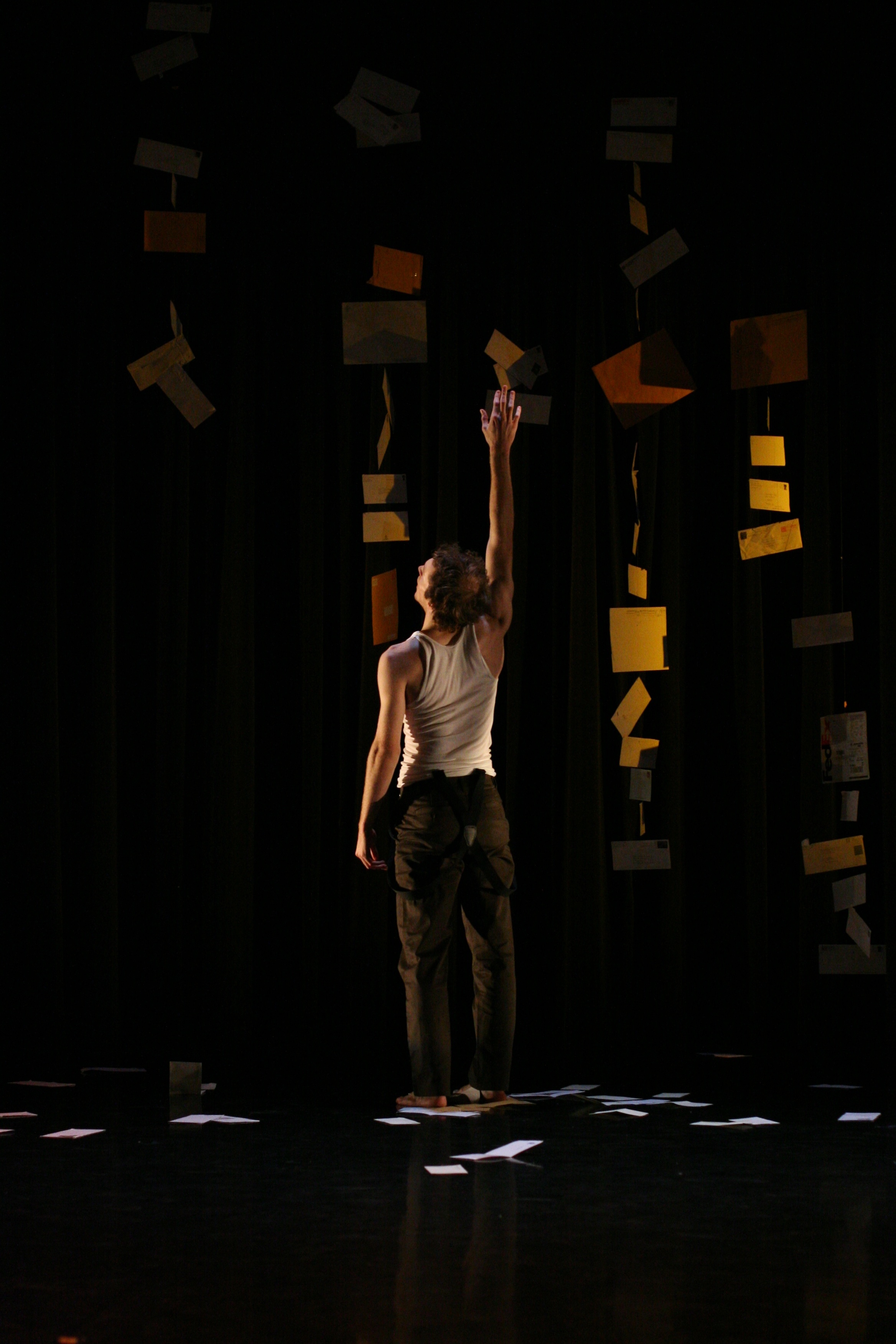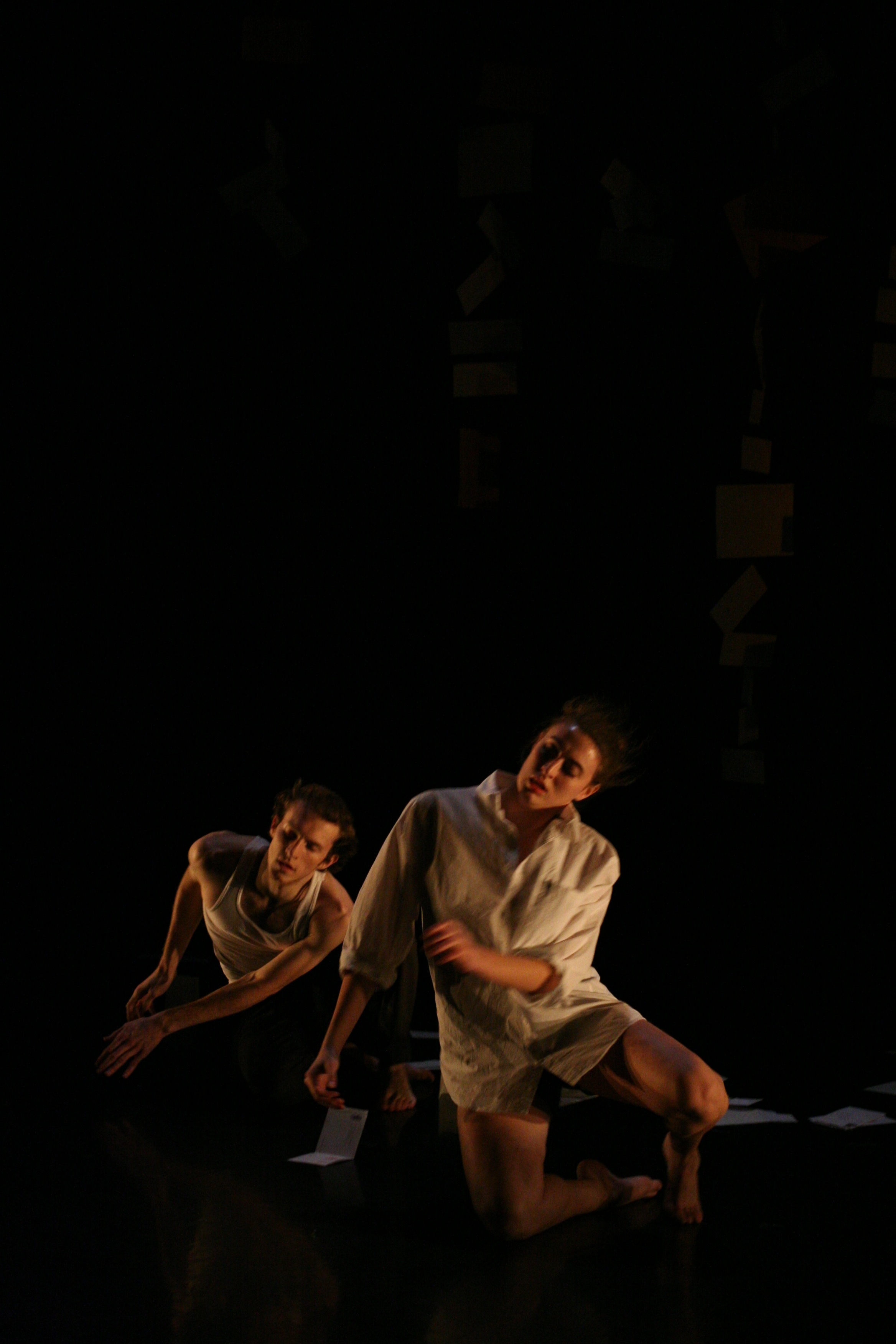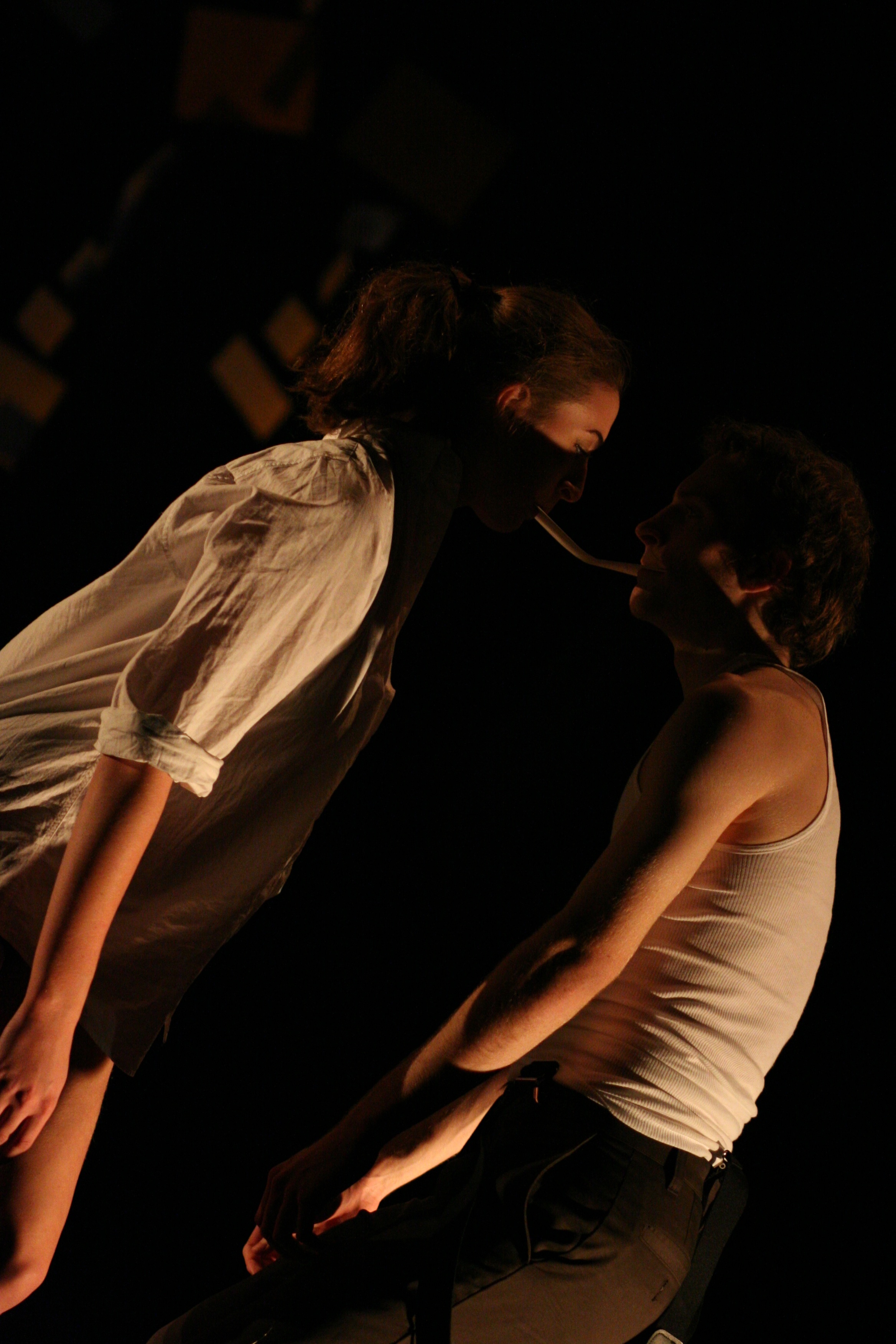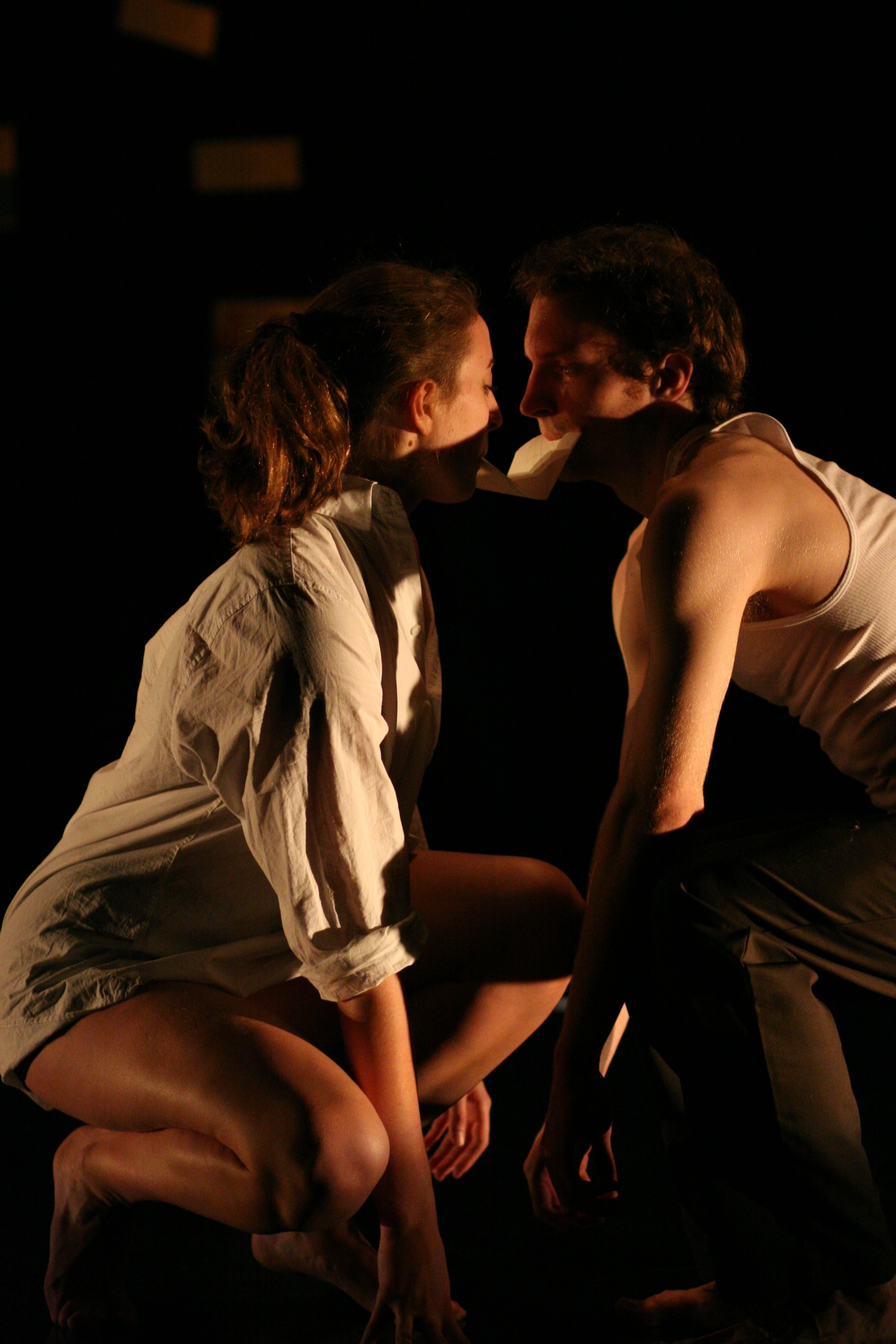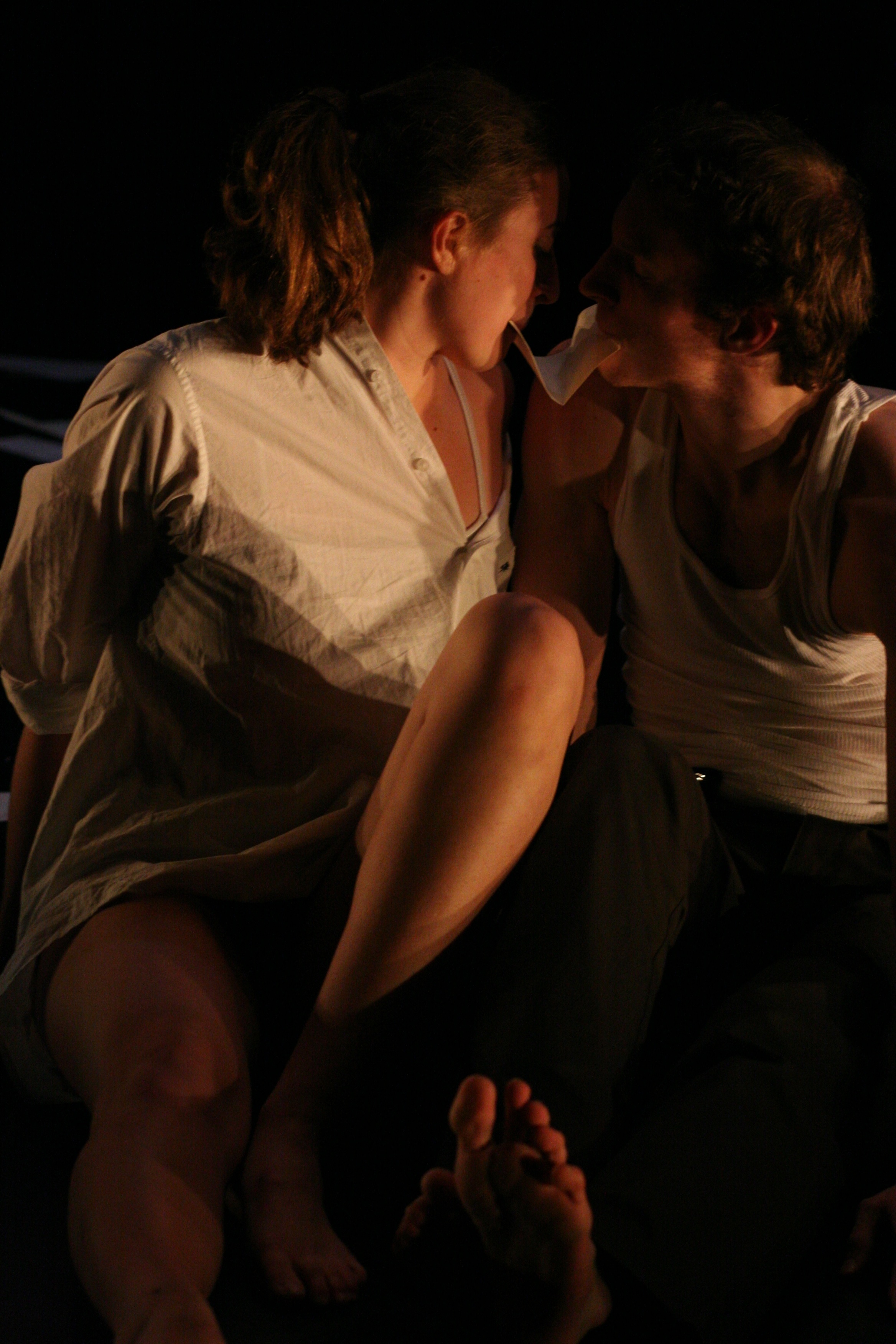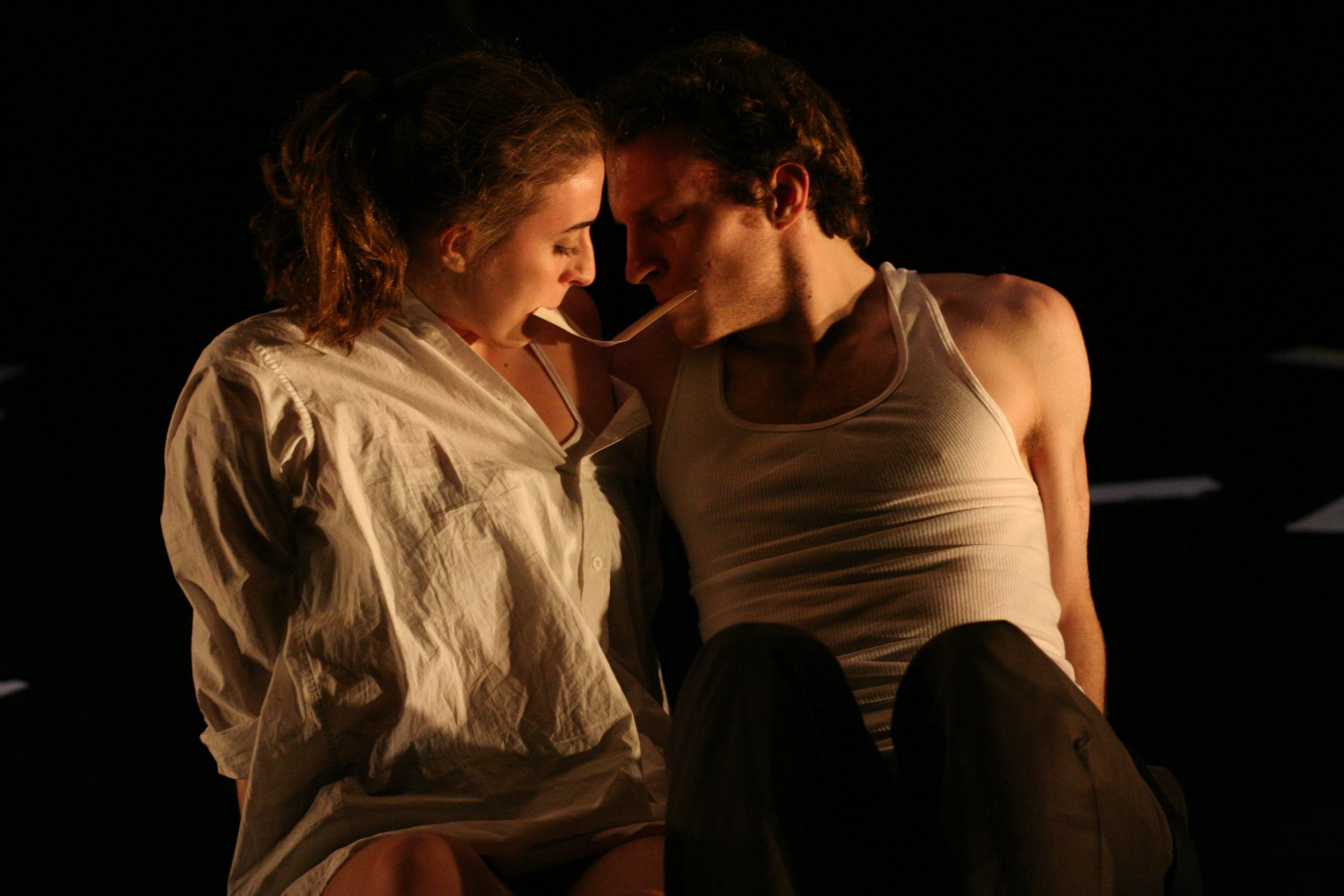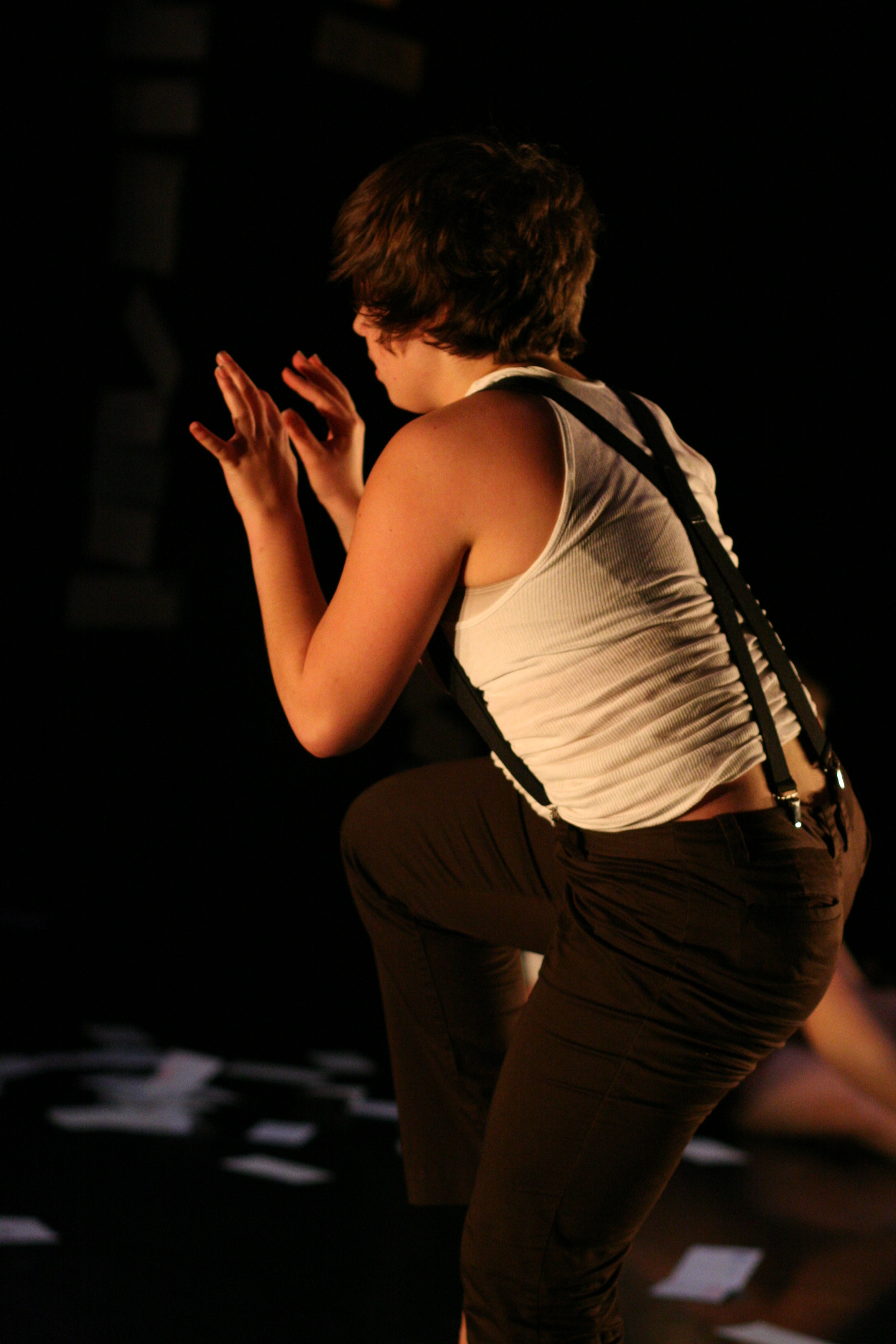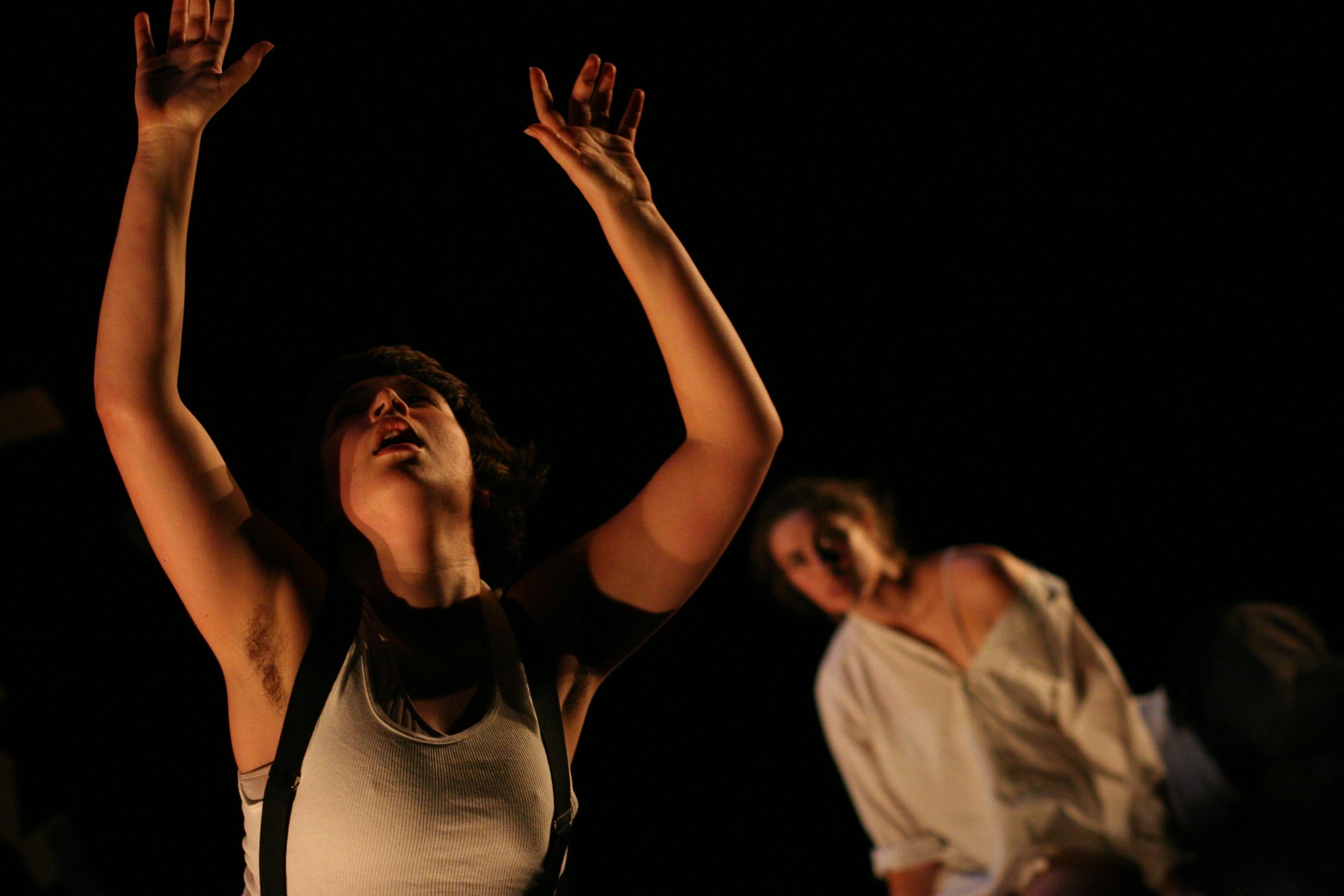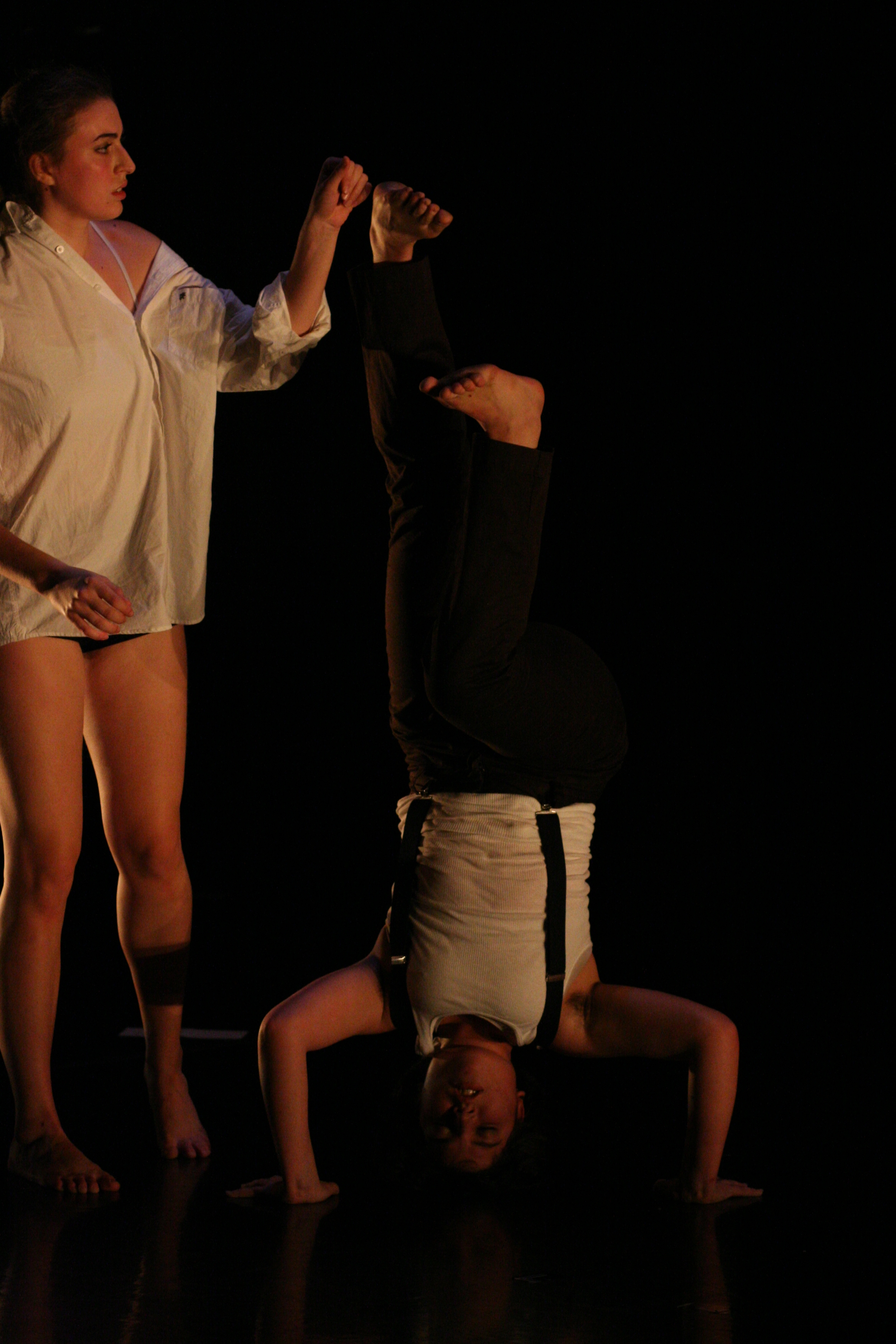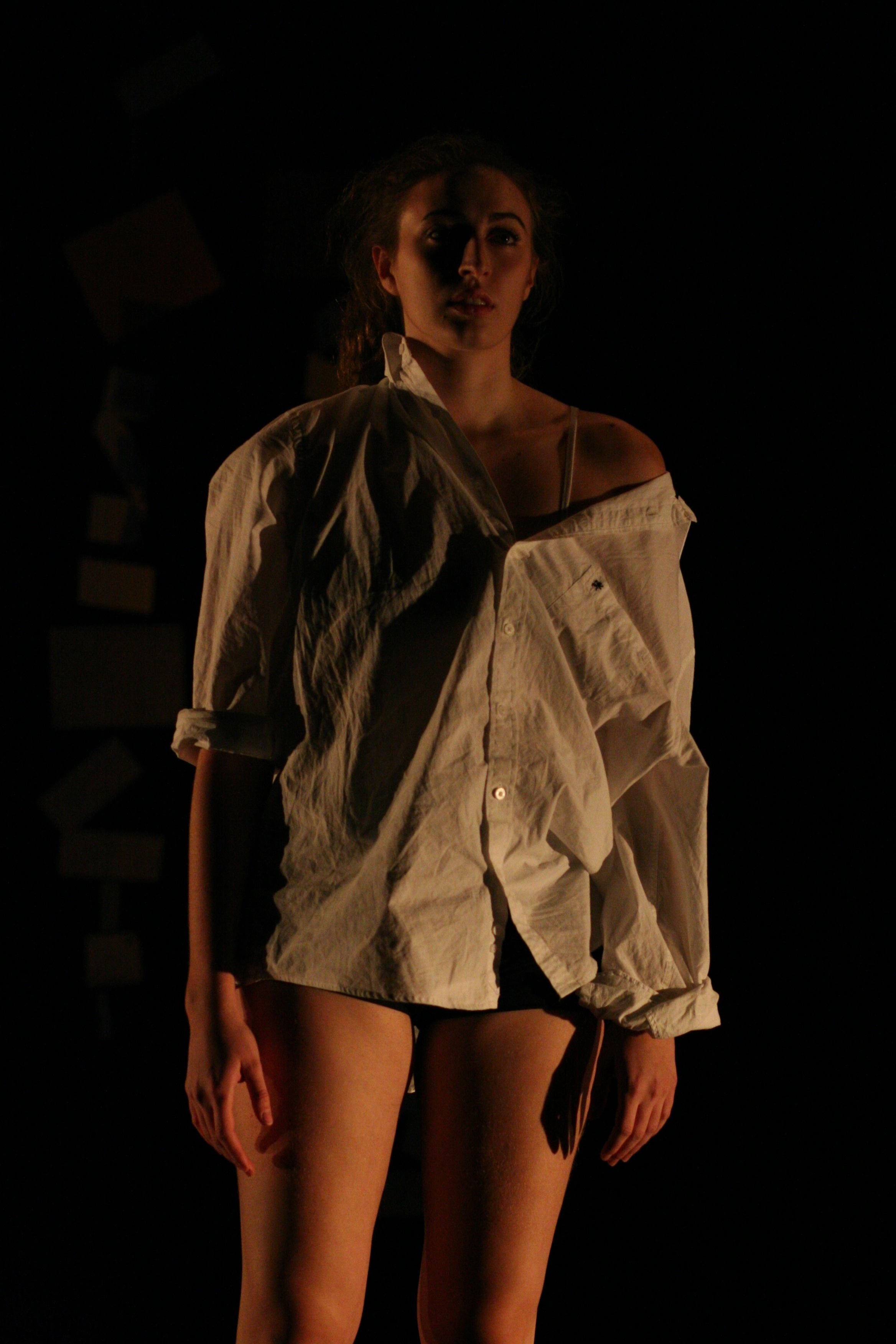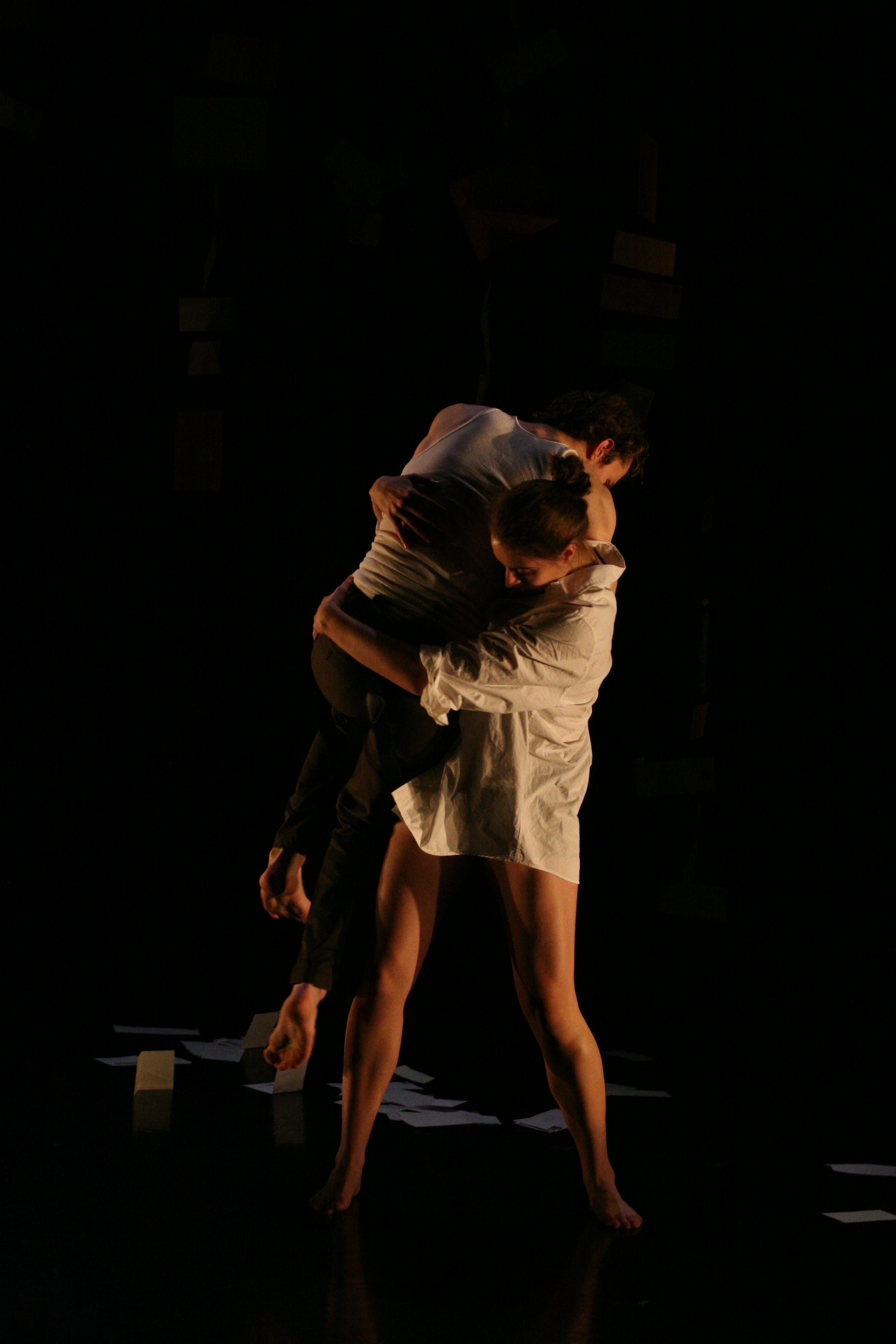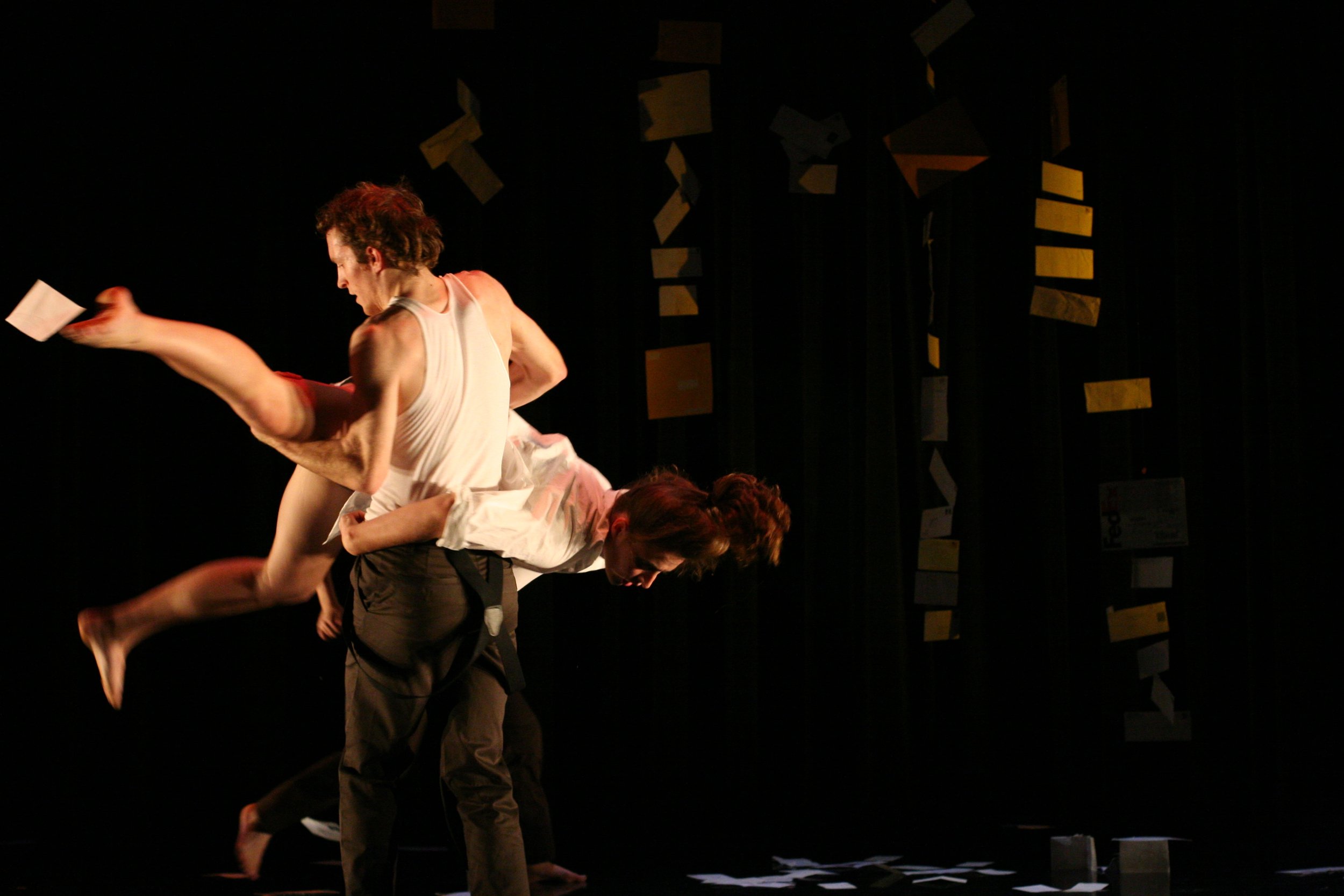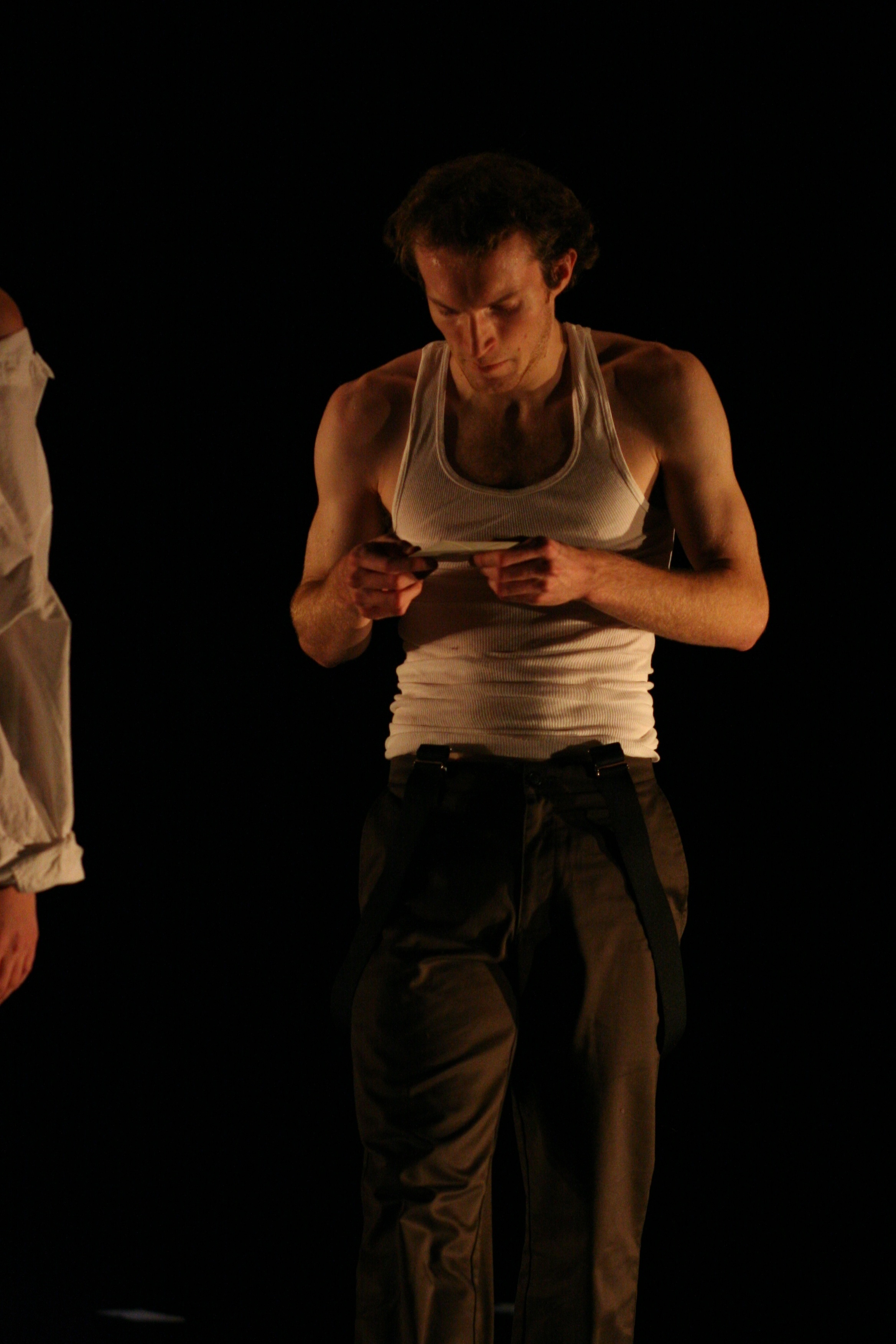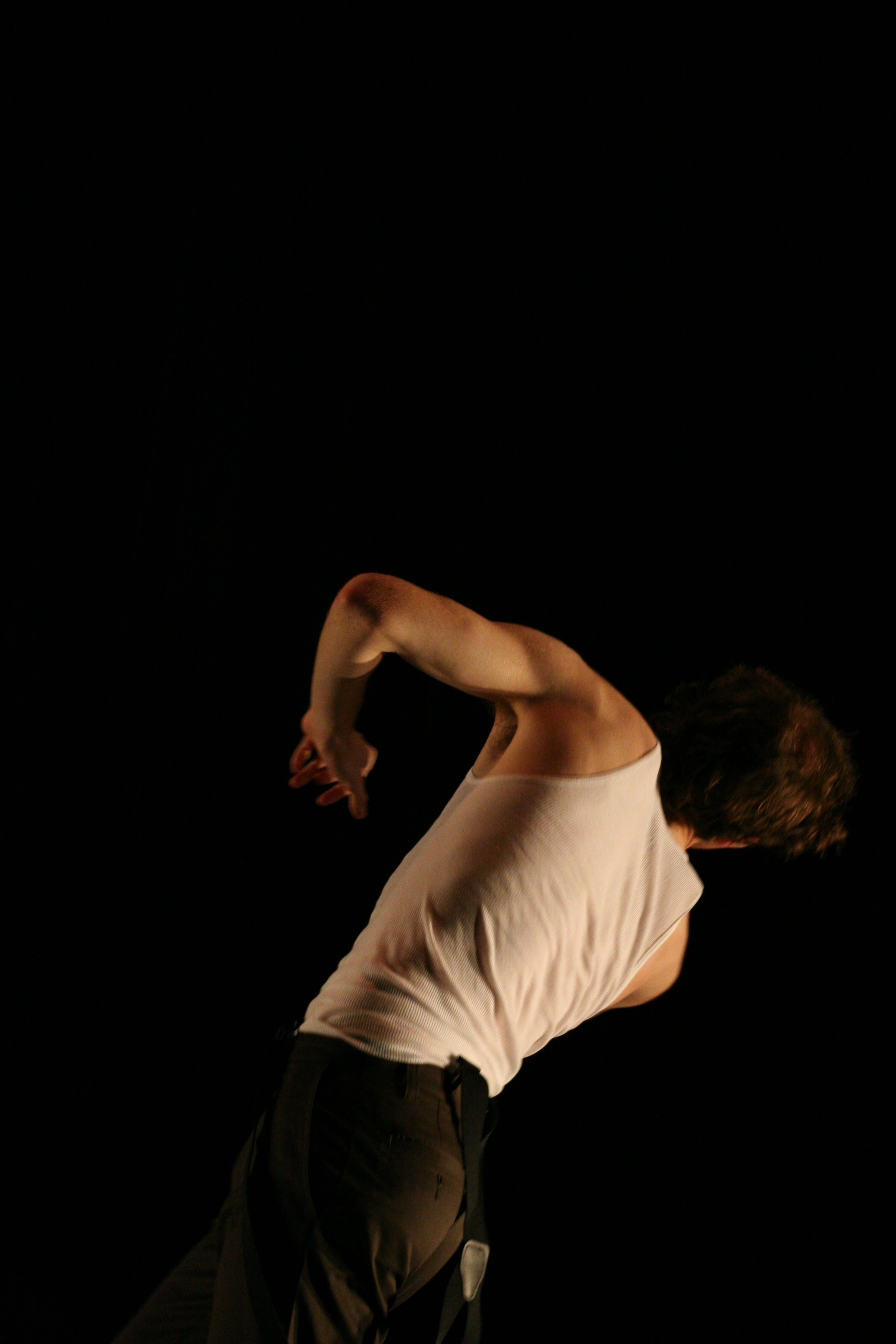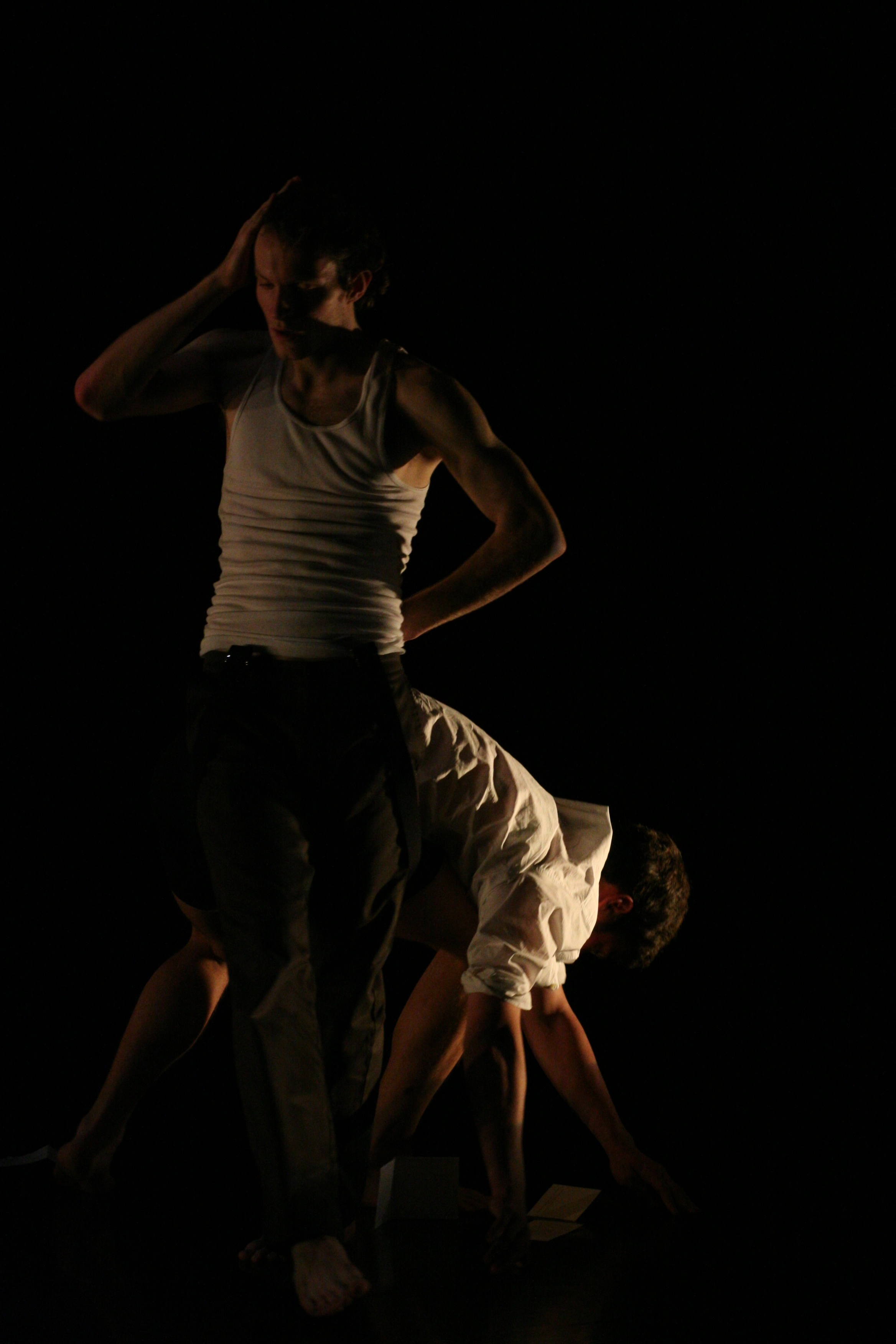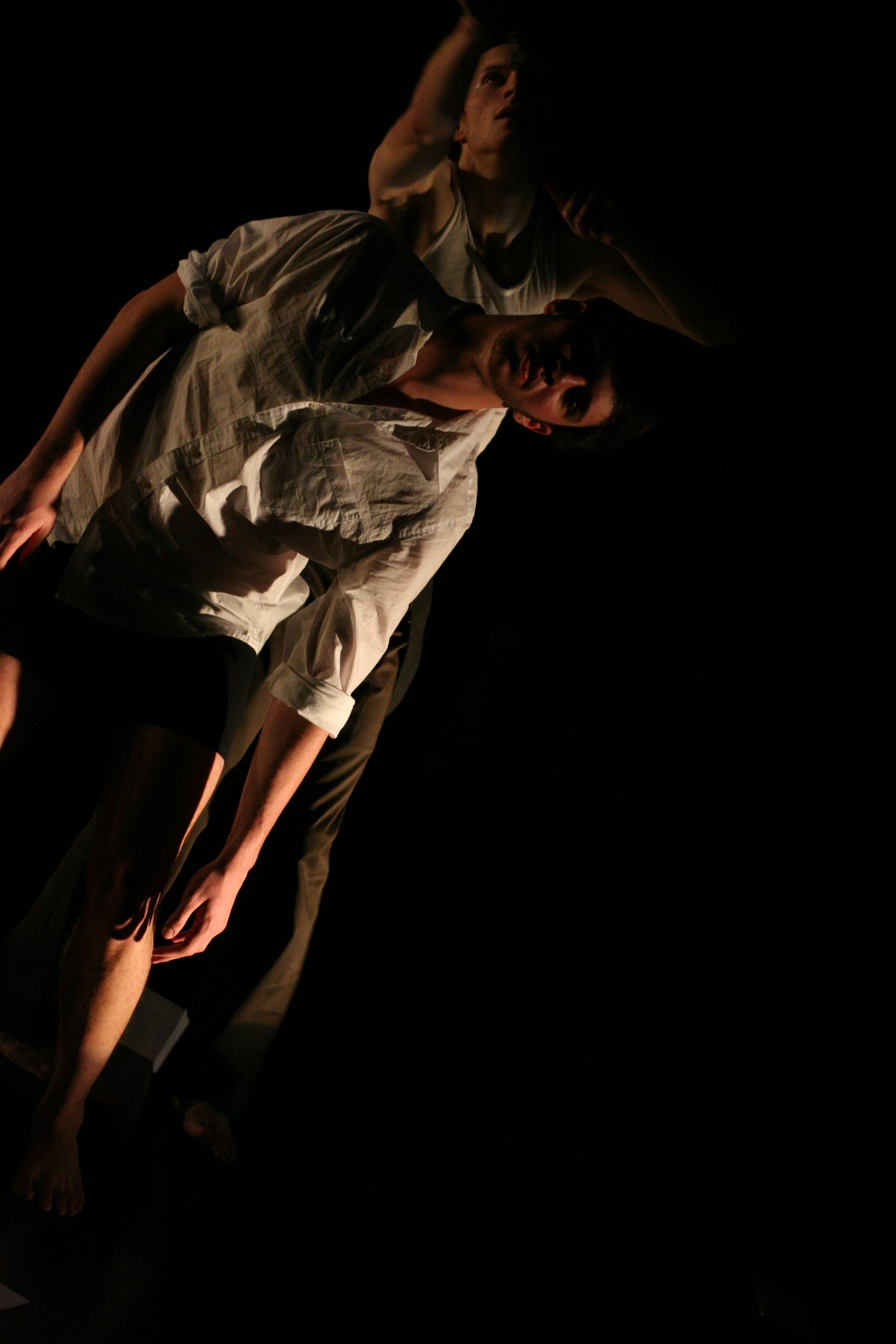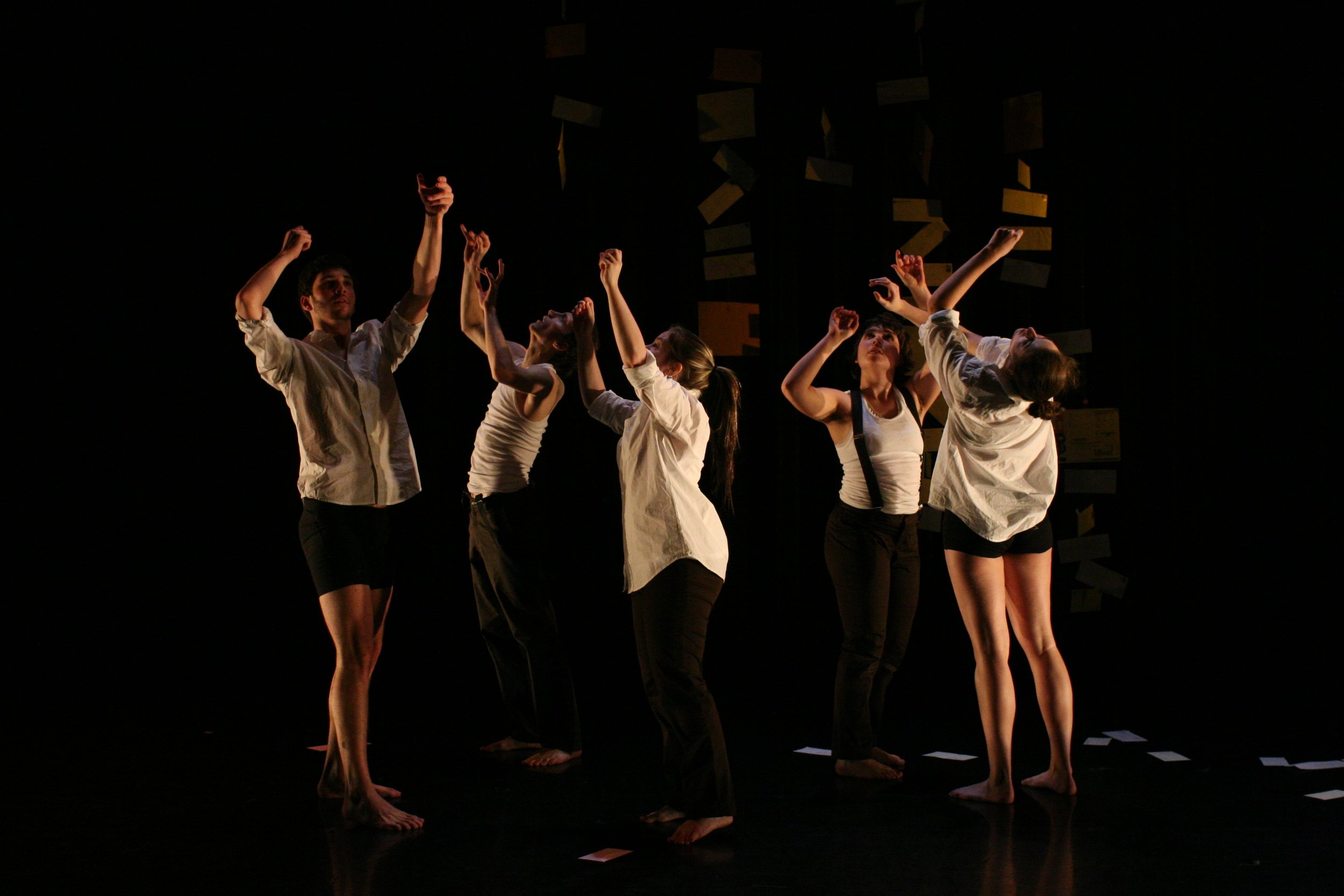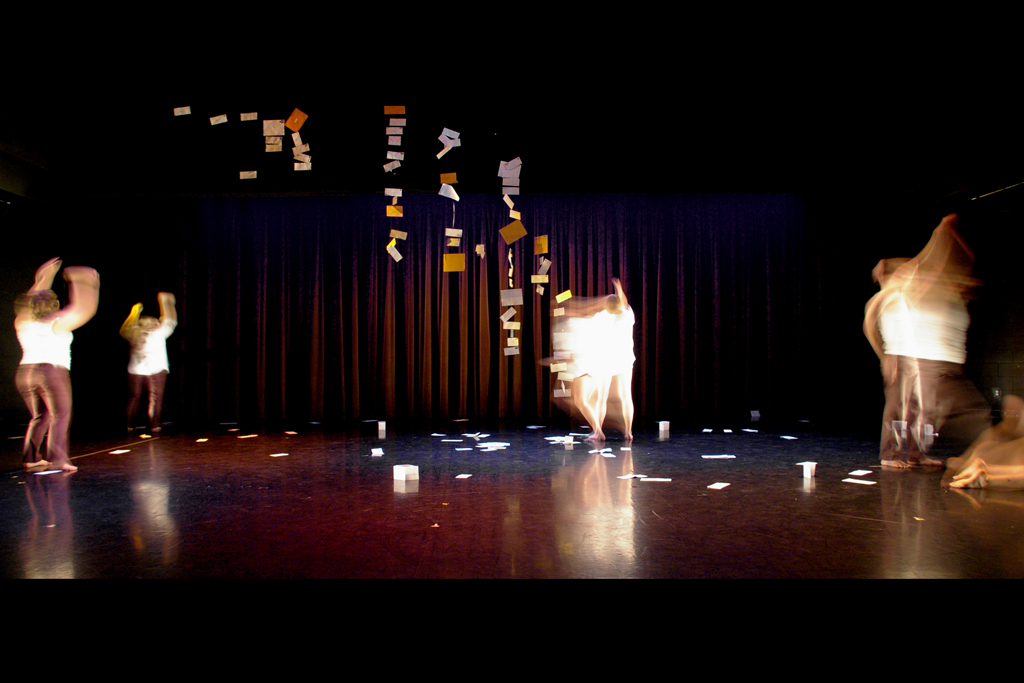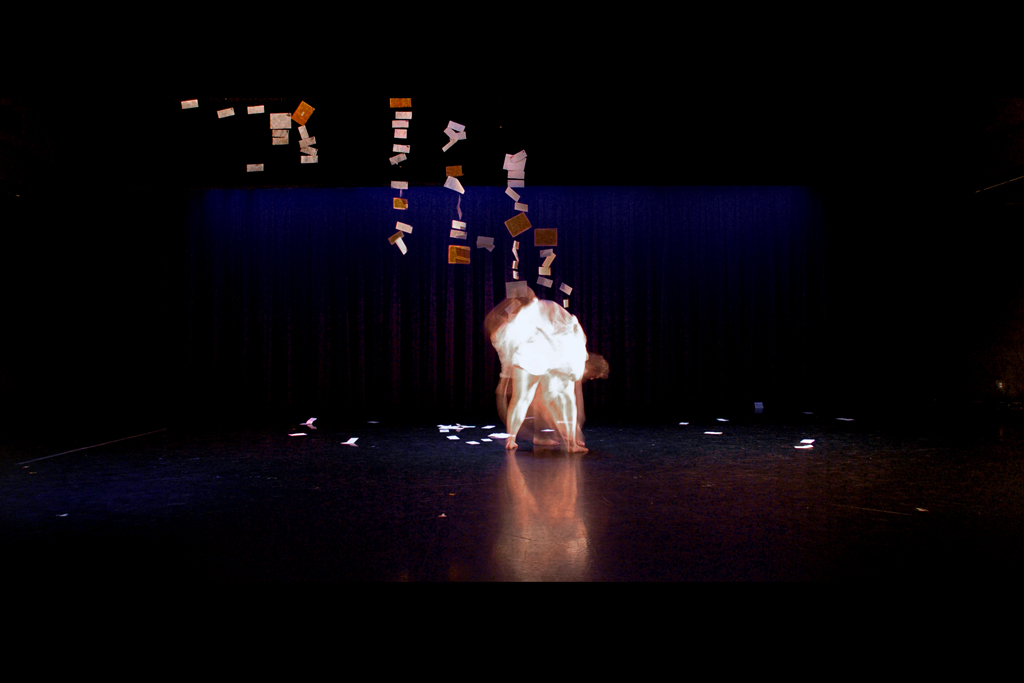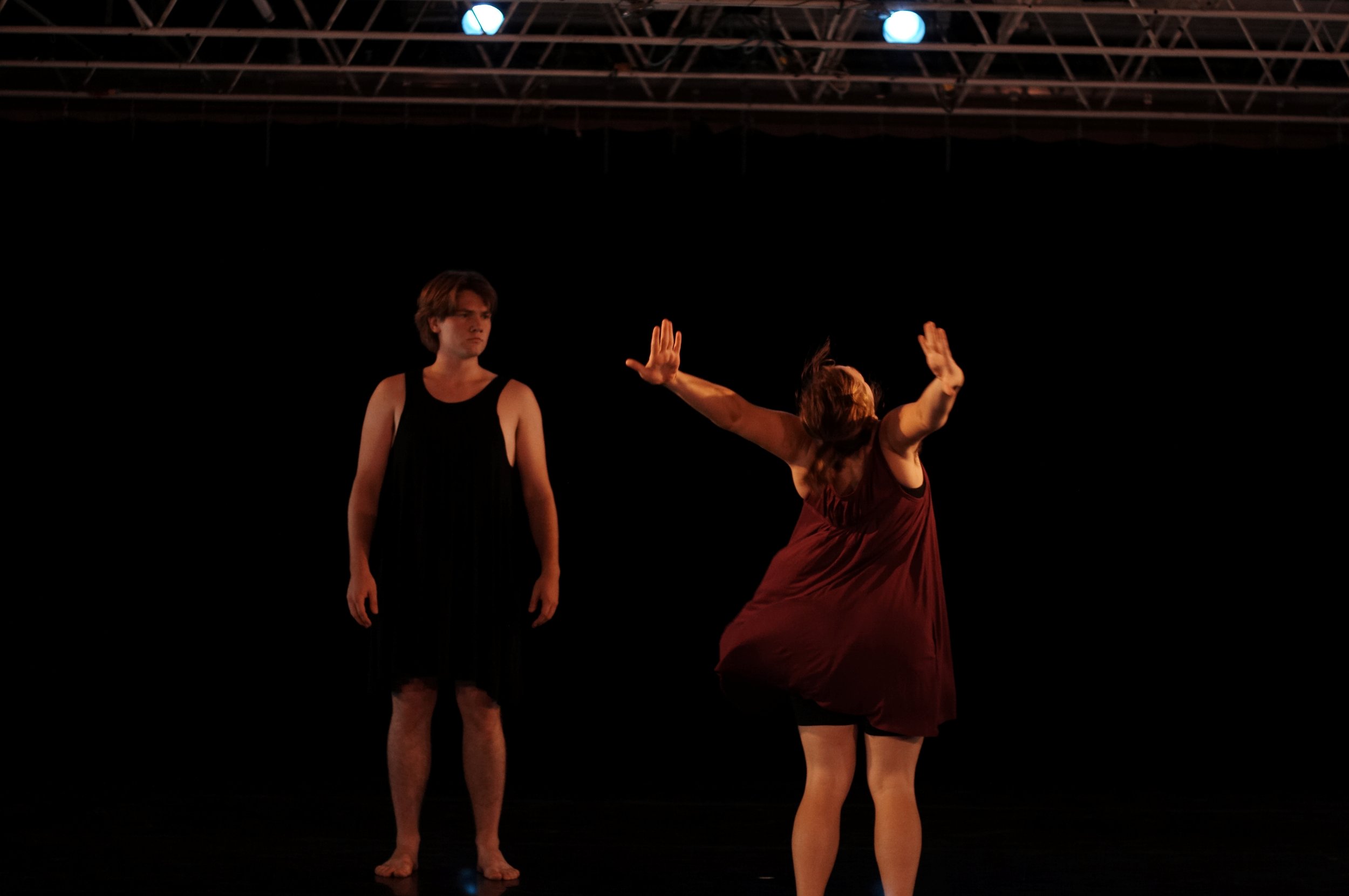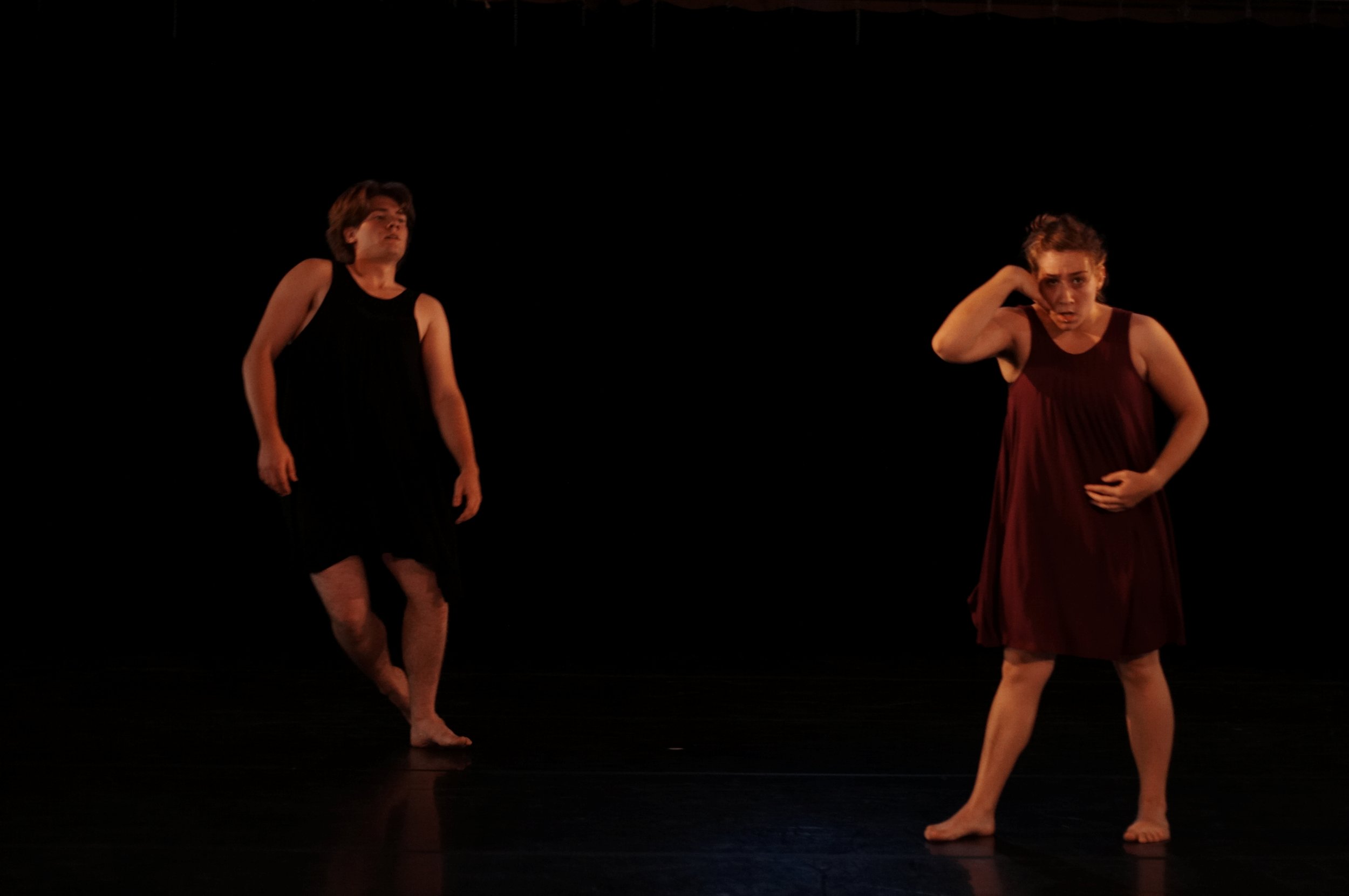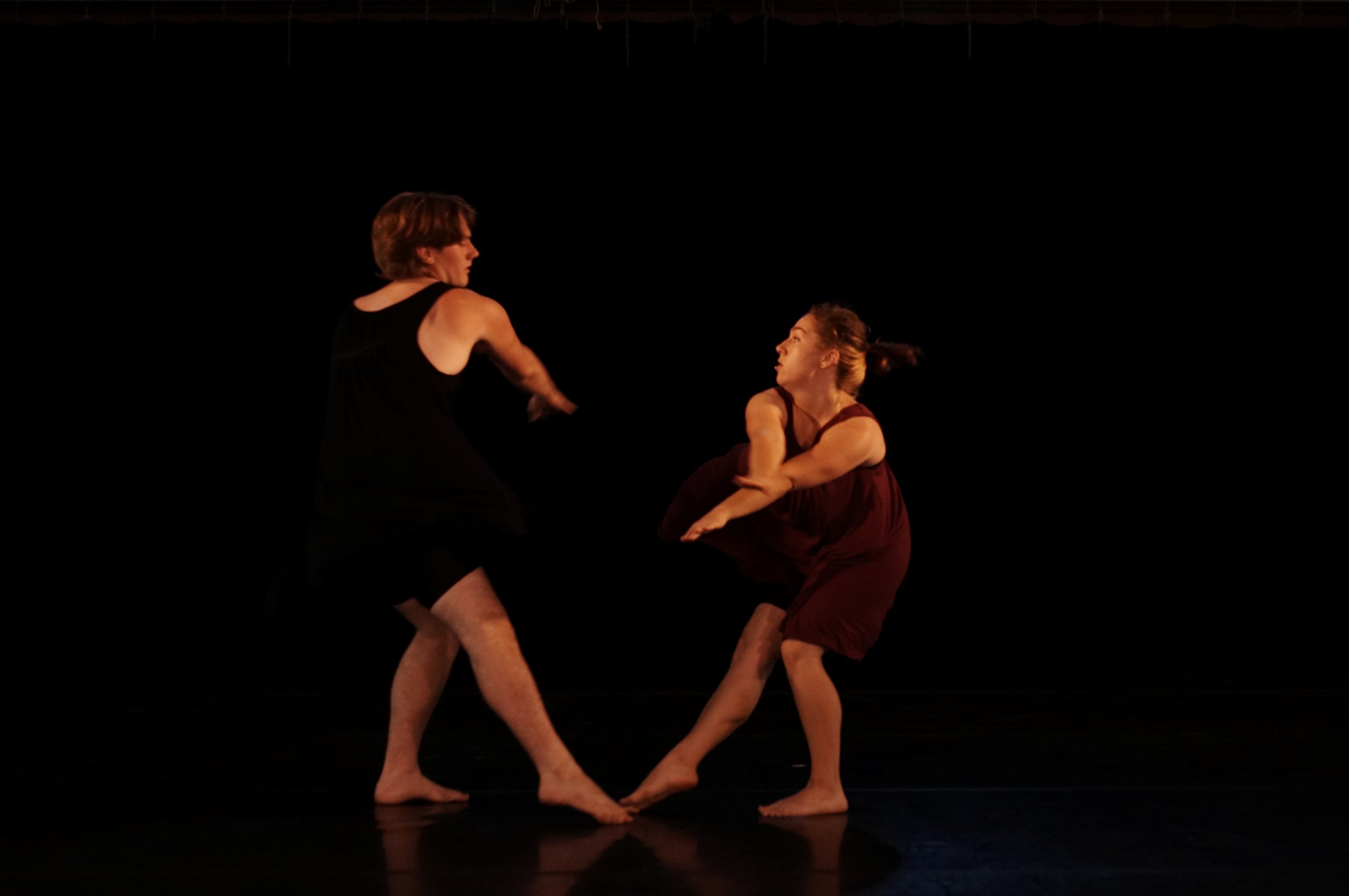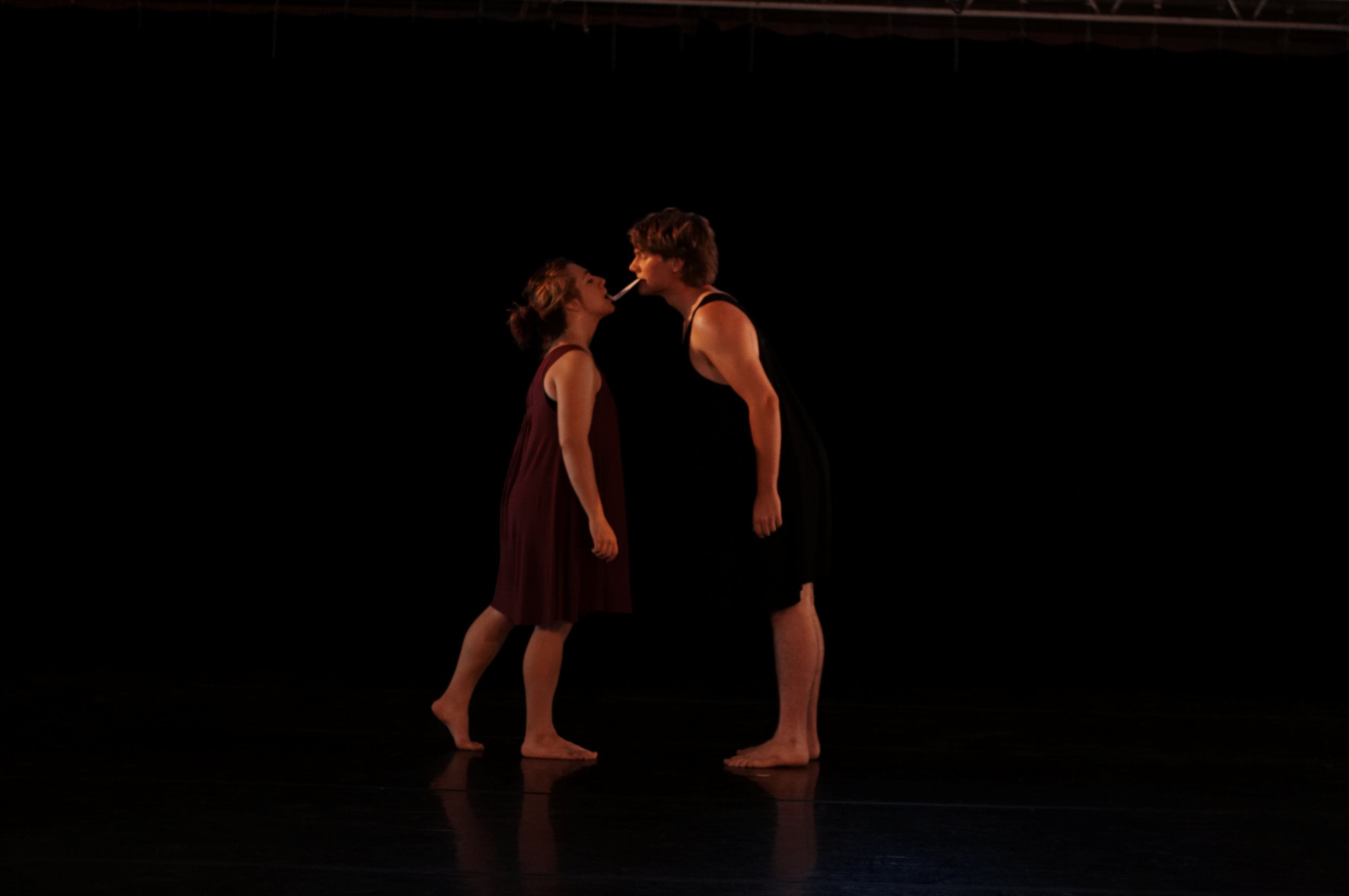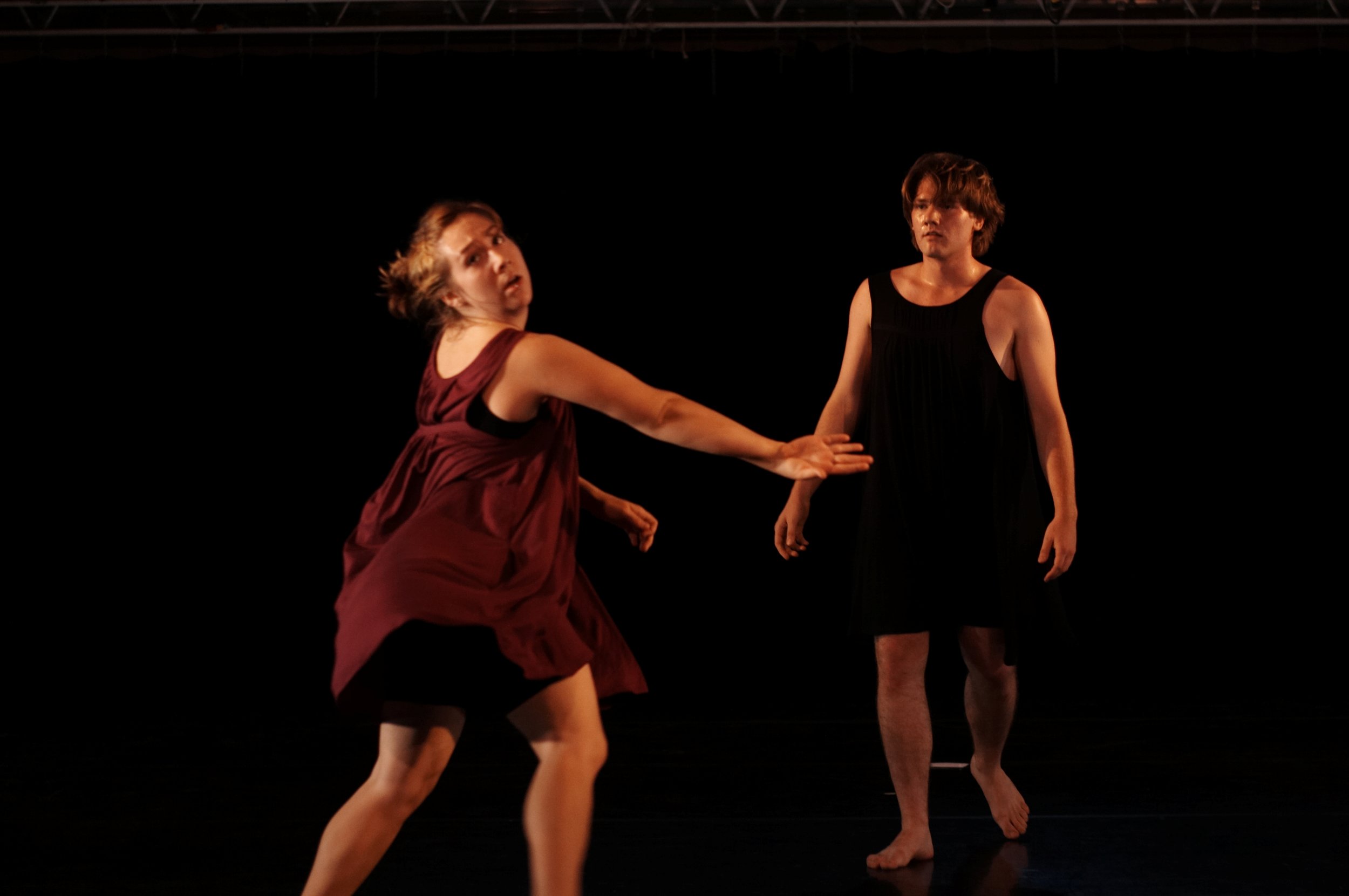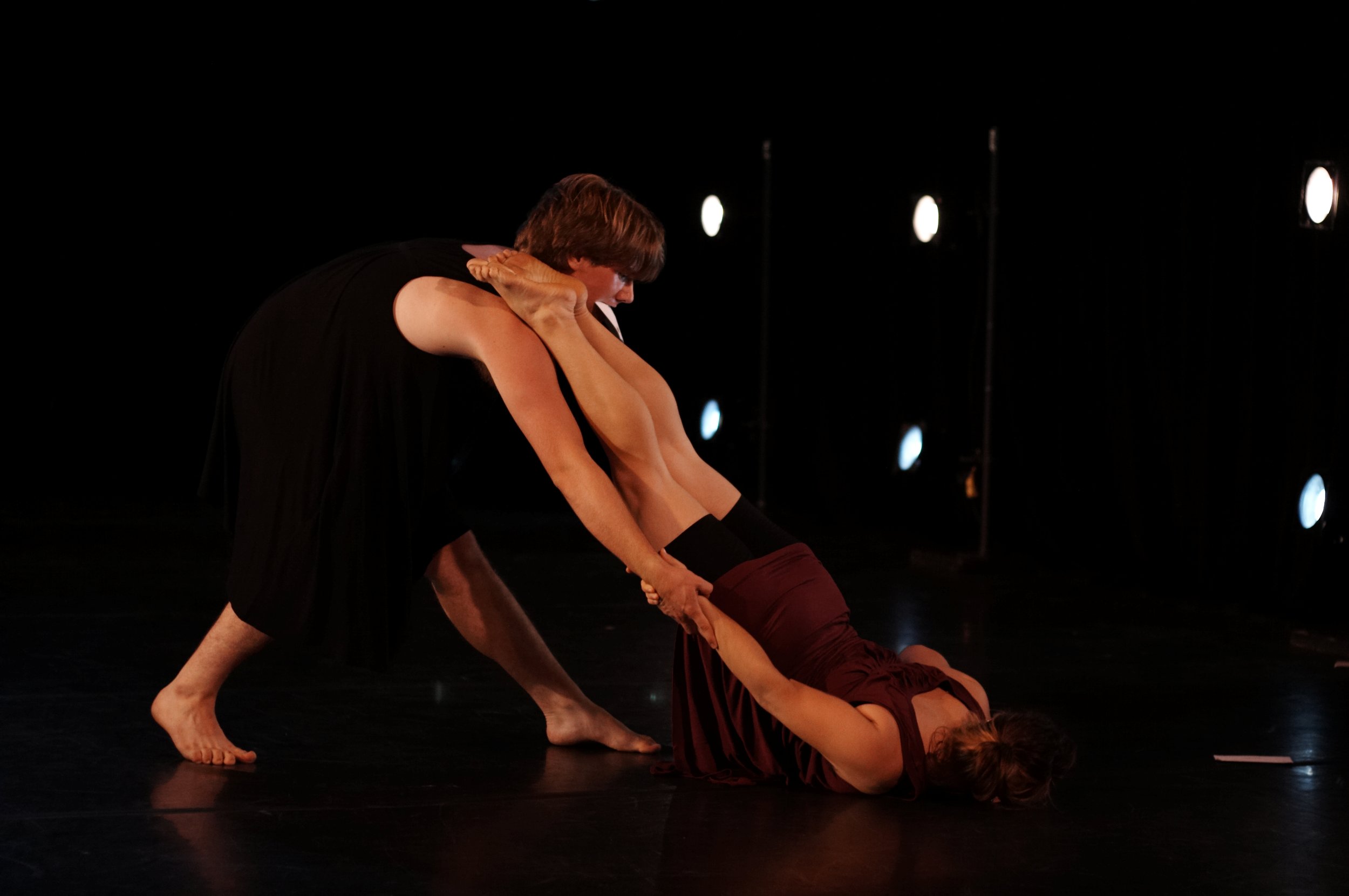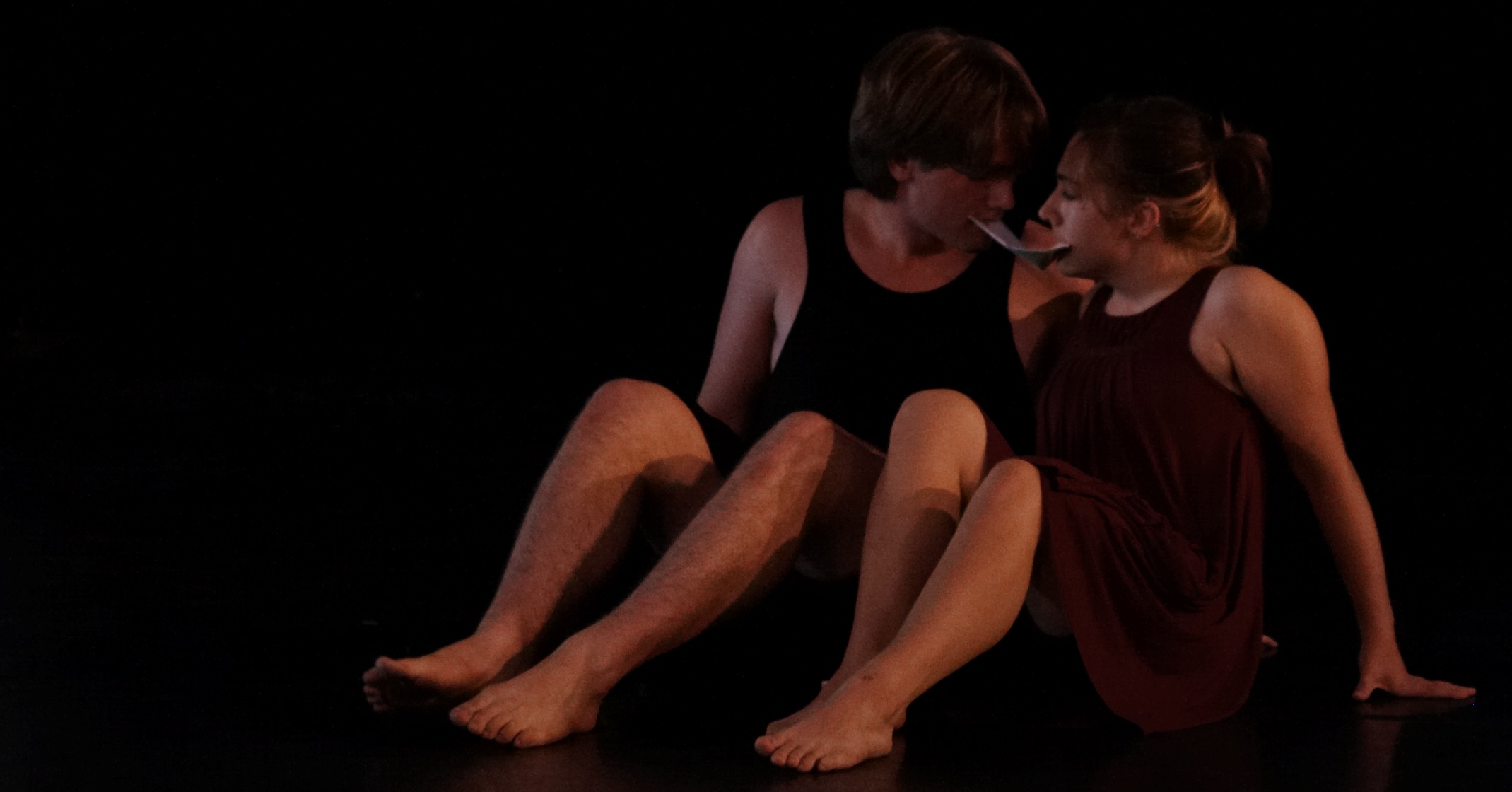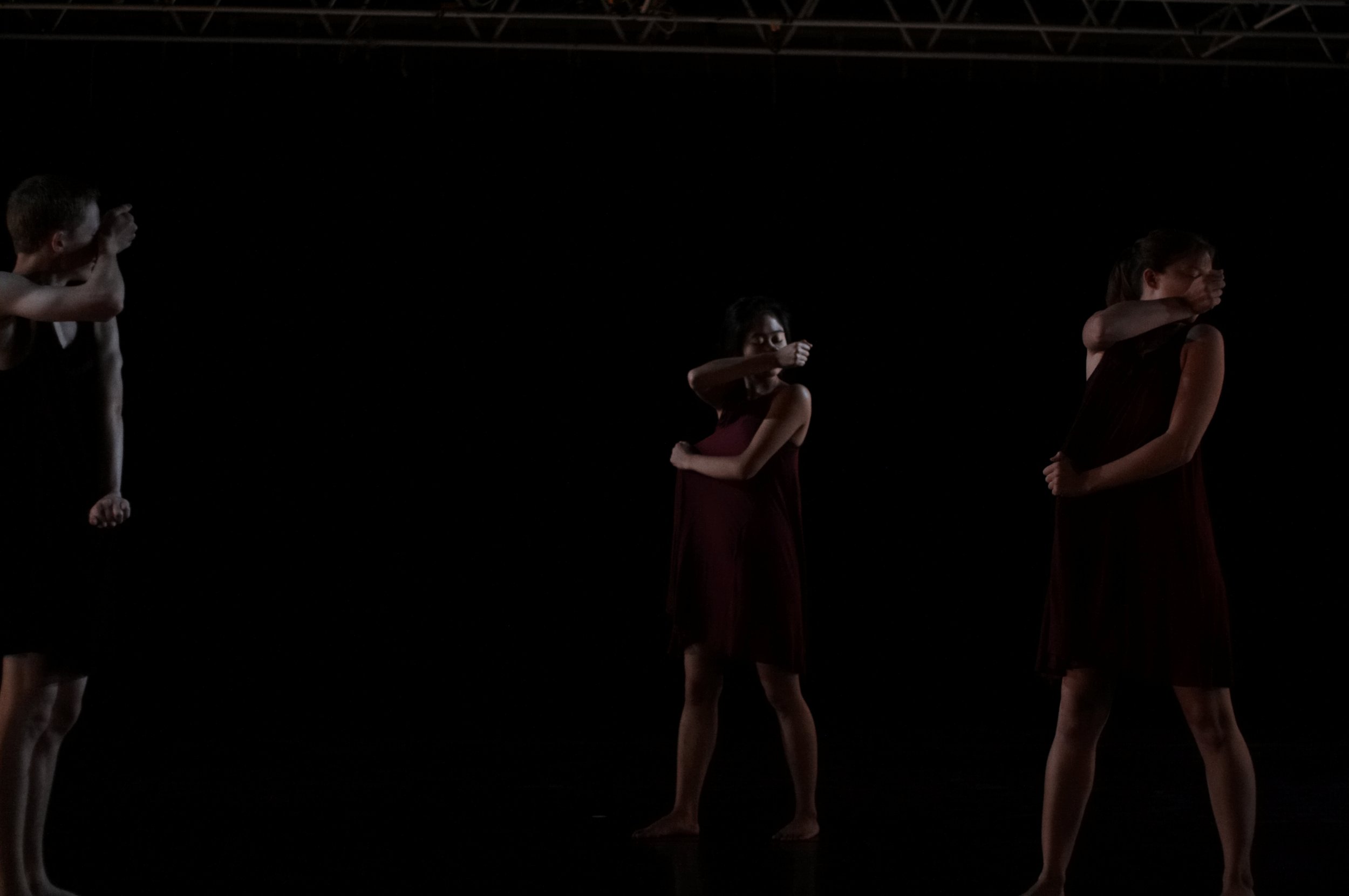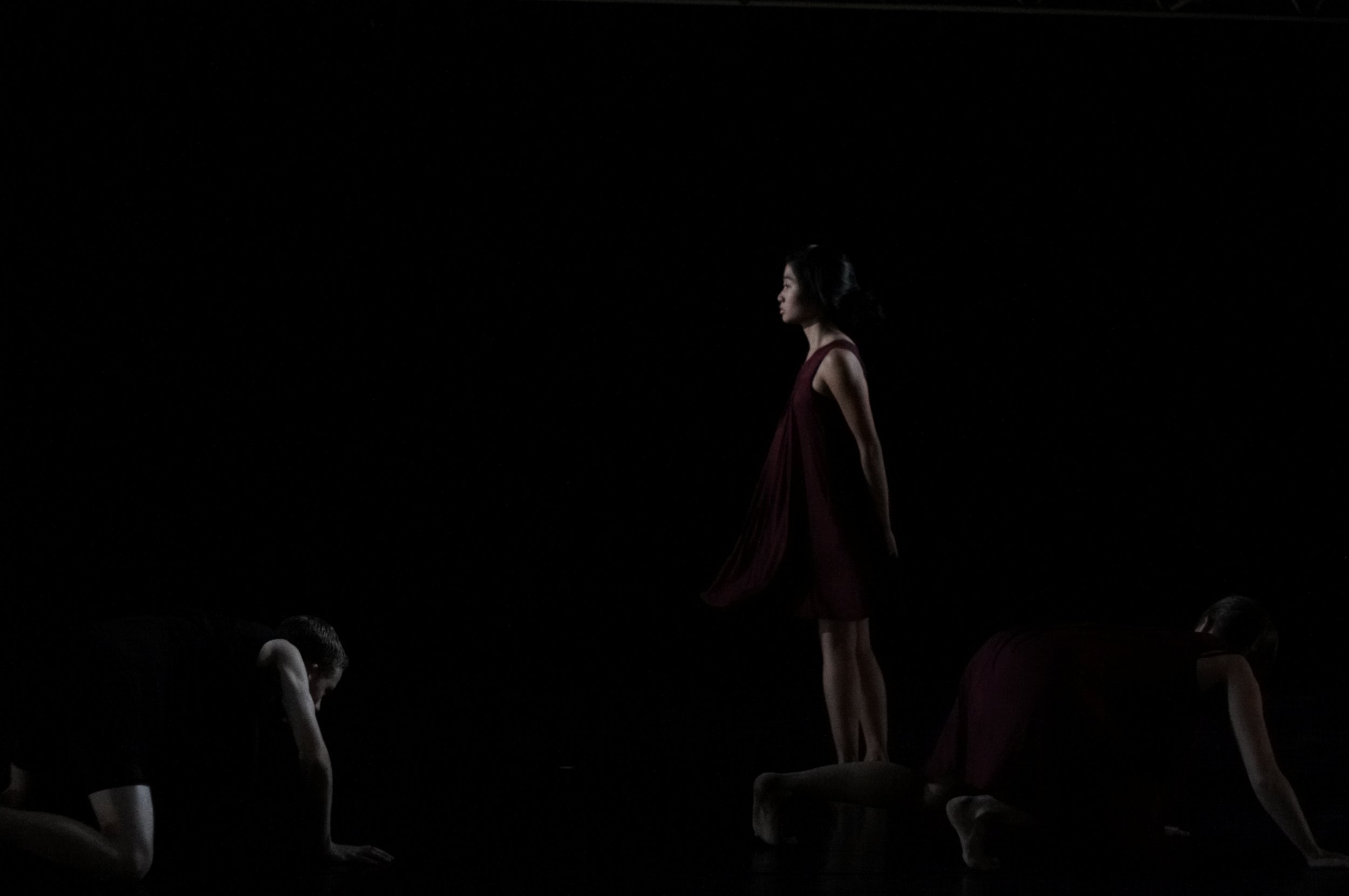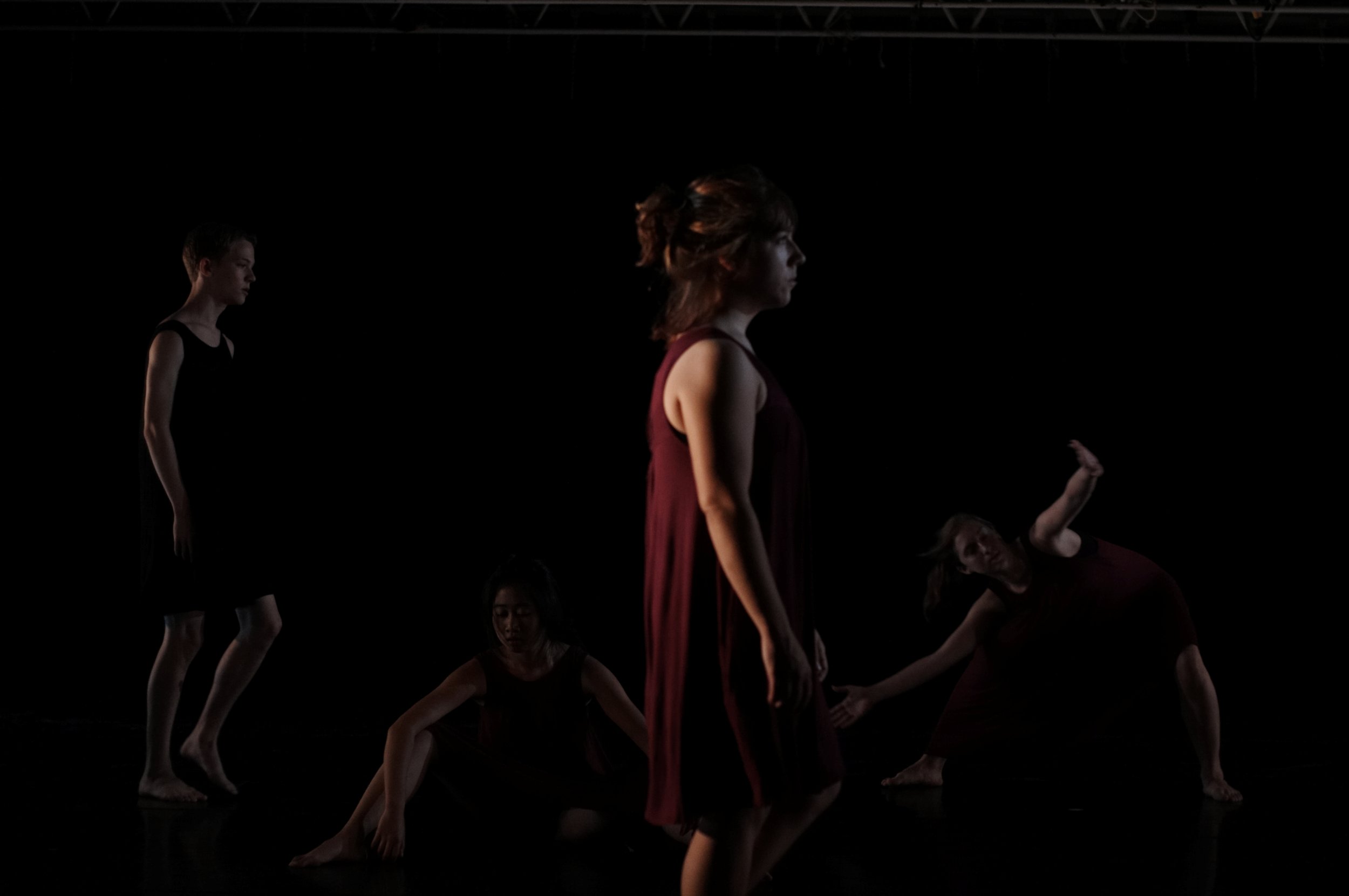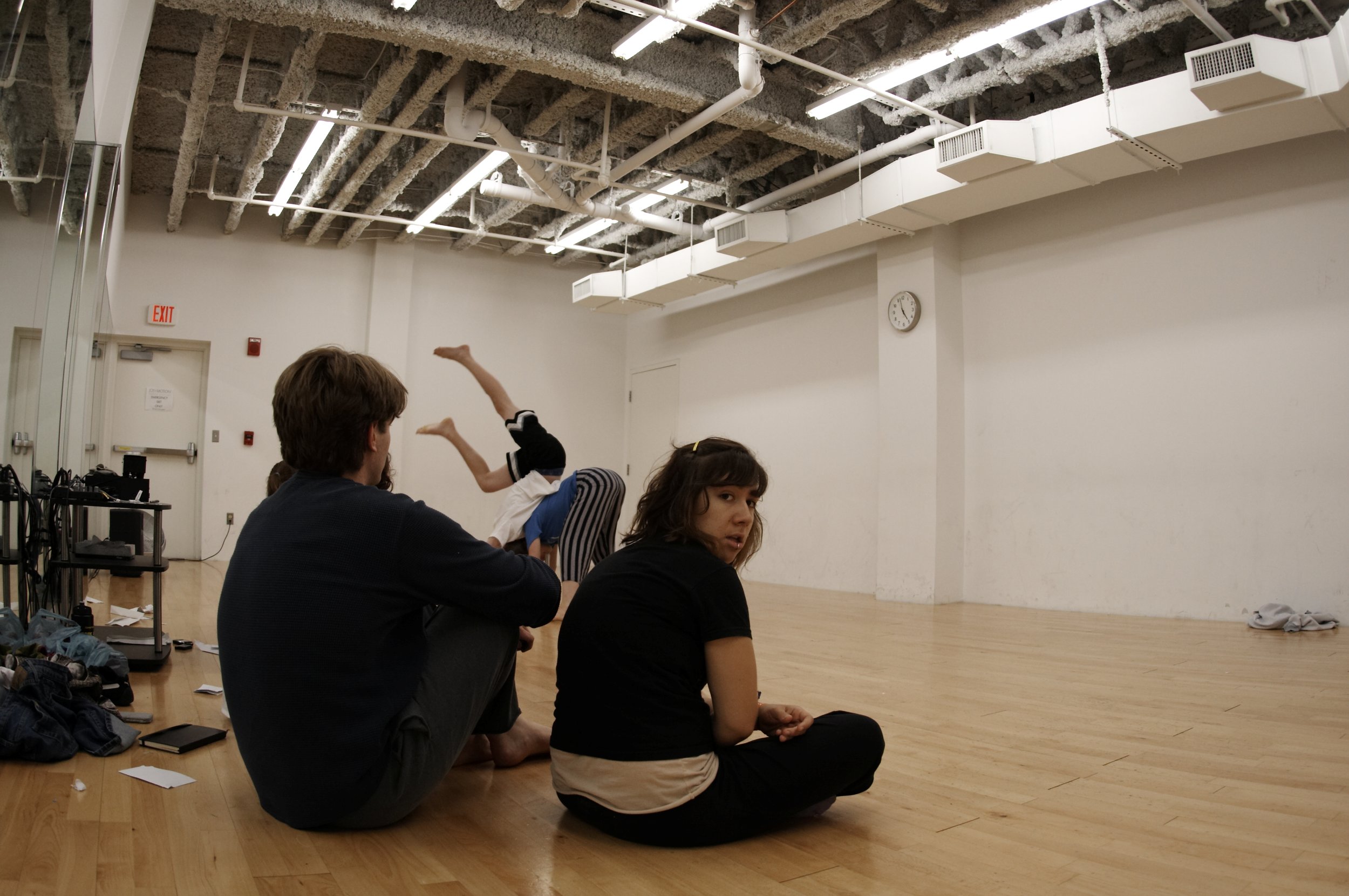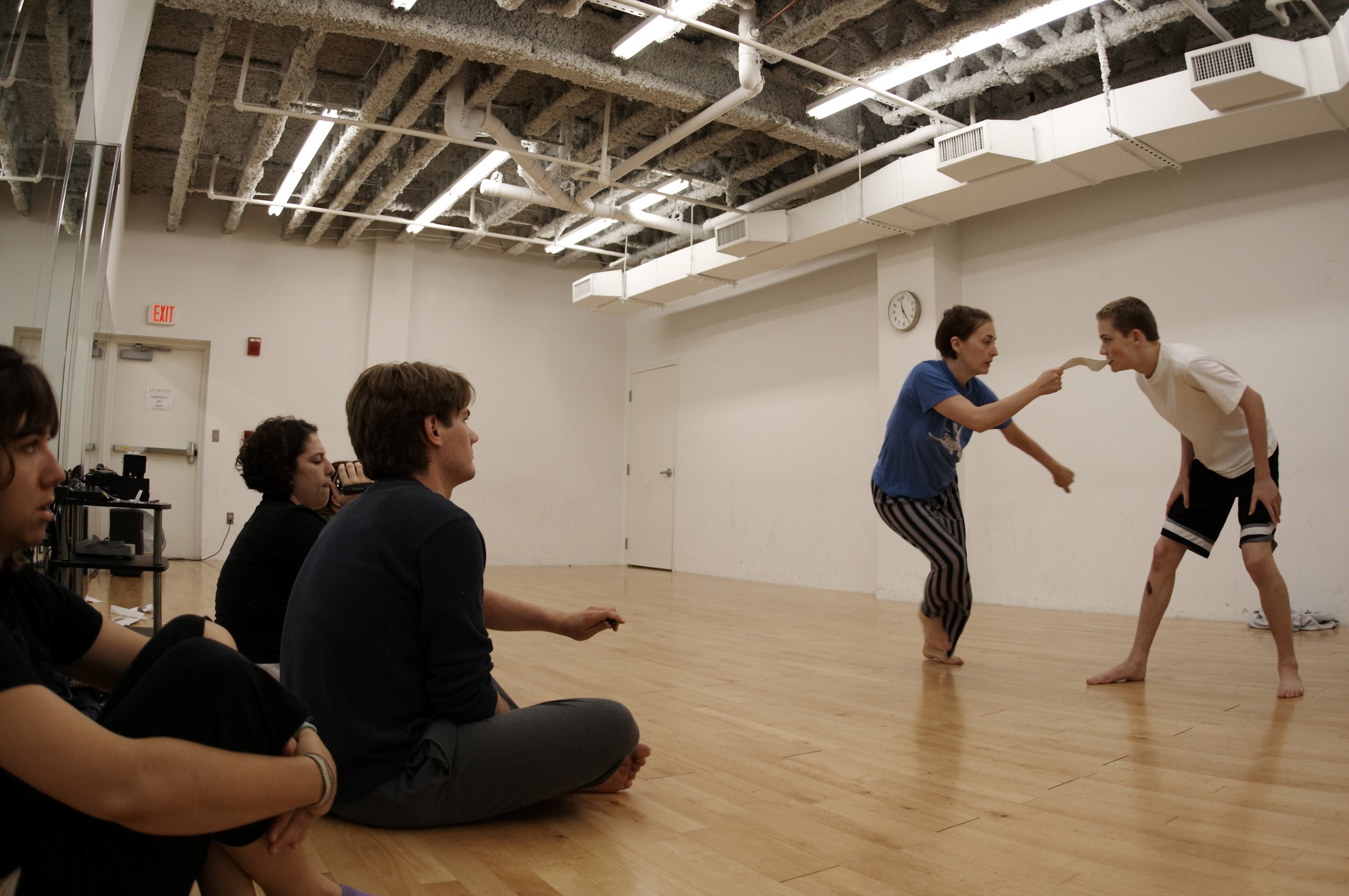The WHat's Left Over After
Hypermedia Thesis Project
at Sarah Lawrence College
Spring 2008
NYC
Premiere
at Sarah Lawrence College
Winter 2007
NYC
i am the missing of you (in process)
at the Jack Guidone Theater
Washington, DC
Summer 2007
exhaustion solo V.2 (in process)
at the Jack Guidone Theater
Washington, DC
Summer 2007
exhaustion solo L.2 (in process)
at the Jack Guidone Theater
Washington, DC
Summer 2007
venn diagrams (in process)
at the Jack Guidone Theater
Washington, DC
Summer 2007
and i sat in the garlic fields and i wept
(in process)
at the Jack Guidone Theater
Washington, DC
Summer 2007
The AOMC's The What's Left Over After was first developed over the summer during the AOMC's second summer season in Washington DC as a series of unconnected vignettes. Once she was back at Sarah Lawrence College, Rosner reworked the material into a 15-minute work premiering in the winter of 2007.
choreographed by Sarah A.O. Rosner + dancers
premiere performed by Larissa Sheldon, Rowan Magee, Ilona Bito, Michael Charles Foote, & Emily Sharp
work in process performed by Connor Voss, Trevor Johnson, Lillie De, Sarah Lokitis, and Vivi Amranand
score written and performed by Theo Wilson
hypermedia multimedia framework created by Sarah A.O. Rosner
shot by Dylan Morgan and Rafael Gamboa
directed and edited by Sarah A.O. Rosner
After premiering the work in the winter of 2007, Rosner used "The What's Left Over After" as the central work for her Senior Thesis, "Creating a Hypermedia System for Dance." This thesis project sought to propose the ideological framework for a hypermedia technology for dance works - a way to capture the process behind the creation of a dance work as it was being made, and then re-present it as in interactive digital network of content. Based on the application of hypertext to re-navigate the experience of literary works including Jame's Joyce's Ulysses, Rosner hoped to use this networked and decentralized mode of understanding to render the dancemaking process immediate and accessible to all, as well as to evade the assumption of dance's ephemeral nature.
Rosner's main intent in this project was to create a new way of creating, presenting, and archiving dance works that stayed true to the full experience of a work. Moreover, she hoped that this project might address the insularity and economic instability of the dance world by capturing the wealth of information and content contained in each dance piece, and presenting it in a way that would be accessible and empowering to all viewers, not just individuals already embedded within the dance community.
Accessible technology at a consumer level was not yet available to create what Rosner was envisioning--she was told that the technology existed, but the only applications of it to be found at that time were in high-budget high-tech advertising campaigns--notably in a PUMA campaign featuring the Bill T. Jones/Arnie Zane Dance Company. Therefore, Rosner set out to create an ideological framework for the system, shelving the actual programming of it for a later point in time.
Over the span of the project, Rosner filmed select summer rehearsals and performances, and all rehearsals and performances at Sarah Lawrence College through the fall semester. She additionally shot a made-for-film version of the performance, in addition to interview footage with each performer and collaborator, and also created a user interface for audience members to respond to select prompts following the show.
After all this content was collected, Rosner mapped out the piece, choreographically dividing it into 7 sections, which contained a total of 9 main phrases, containing a total of 22 specific movements. For each of these movements, phrases, or sections, she edited short videos comprised of footage of the work's creation--footage from rehearsals or the performance of previous iterations, interviews with the performers, feedback and questions from the audience after the show, sketches from her notebooks, and links to related narrative content. She additionally created short videos to address areas of bonus footage not specific to the work's choreography: meta-content dealing with the works collaborative elements of music, lighting, set design, and costumes, as well as content covering the rehearsal culture of the work, and detailing performers experiences and backgrounds, favorite moments, and general working process.
After sorting and mapping the full meta-content of 'The What's Left Over After,' Rosner amassed a total of collection of 298 short videos, 9 audio tracks, and 105 still images. The intent for the final product was to create a user interface that positioned the dancefilm of The What's Left Over After as the main portal to the hypermedia, overlaying navigation symbols on to the film that indicated when a user had the opportunity to access metadata (by way of one of these videos, images, or audio files) about a specific movement, phrase, section, music, or design element. Rosner also further mapped the each of these files connectivity to the rest of the work and meta-data content. In this way, a user could choose to navigate the work in a few different ways - by watching the dancefilm in full, by pausing the film as they went to learn more about a specific element, or by navigating hypertextually, and following the thread of one movement or idea as it snaked through the work anachronistically. In this way, though she never ended up with a functioning hypermedia system, Rosner's mapping of the 'The What's Left Over After' and the entirety of the works metadata provided the outline of how a dance work might be mapped and programed into such a system--a functional internet of its own information, potentially able to be networked to other self-contained hypermedia projects as the potential arose.
Though the project came to a conclusion with the presentation of Rosner's thesis and was never fully built, the backend mapping of the piece proved to withstand the test of ephemerality. When re-presenting the hypermedia project to Bill T. Jones during her employment at Dance Theater Workshop/New York Live Arts as a potential new project for the organization to take on, Rosner was able to use the hypermedia mapping --four full years later--to reconstruct the piece with stunning detail and clarity within one evening. Though NYLA did not receive funding to explore the project, this testing of the system was a gratifying example of how such a system might address some of the issues stemming from dance's ephemerality. Current technological advances including the prevalence and accessibility HTML5 make many of elements proposed in the hypermedia available at a consumer level--if there was interest in using this framework to create a functioning hypermedia system it would be more possible now than it ever has been before.

